Backup for Baby
U of U Health’s TeleNICU service offers virtual support for newborns in need at community hospitals. p. 9
Aww, Shucked! Learn about the ‘corny’ Broadway sensation that took root at Pioneer Theatre Company. p. 22
Research Quest
In an age when misinformation spreads like wildfire, a U museum is arming kids with critical thinking skills. p. 28
Learning Abroad
Explore how global programs are turning textbooks into epic treks and classrooms into life-changing adventures. p. 34
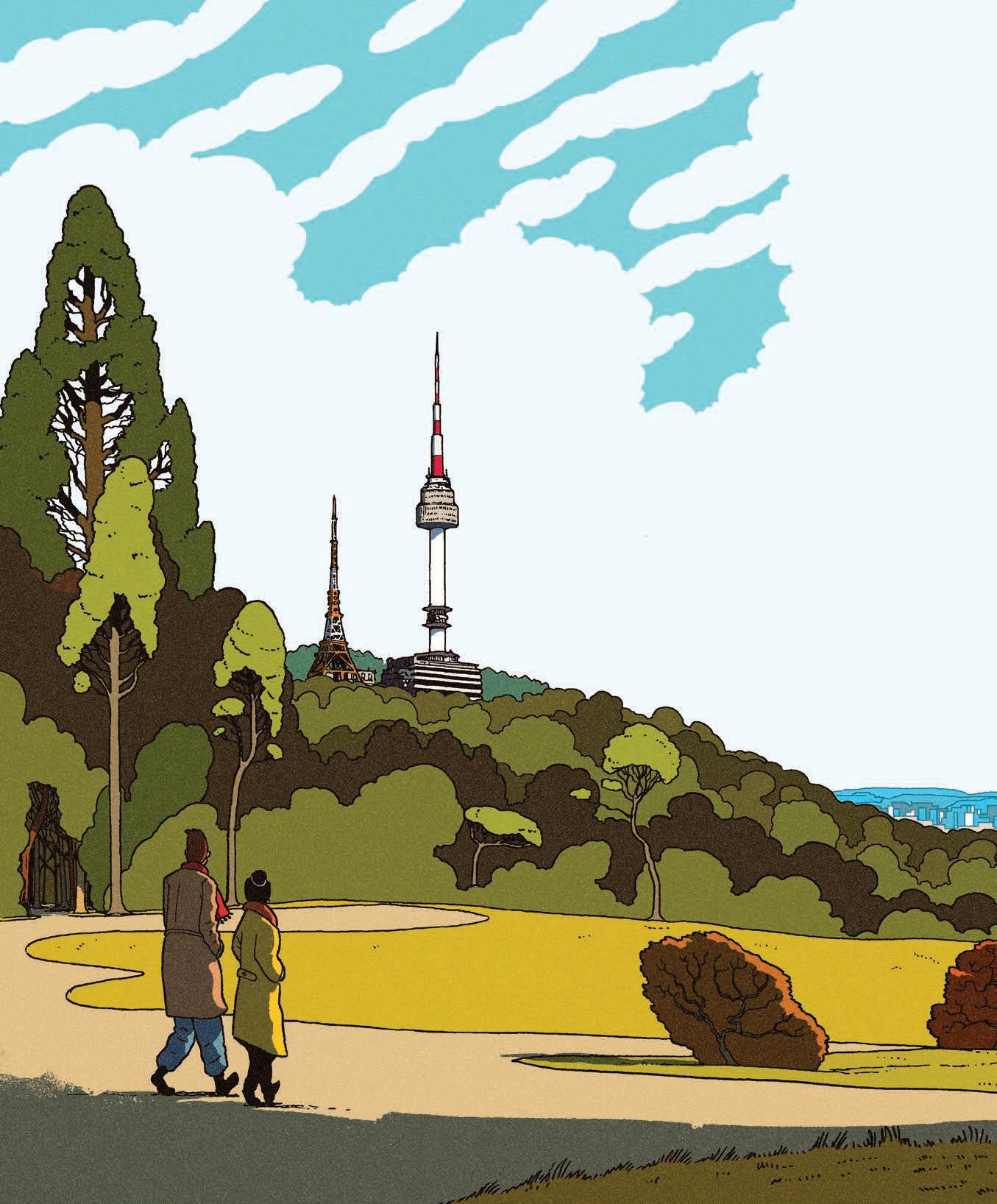
University of Utah Magazine
FALL 2023
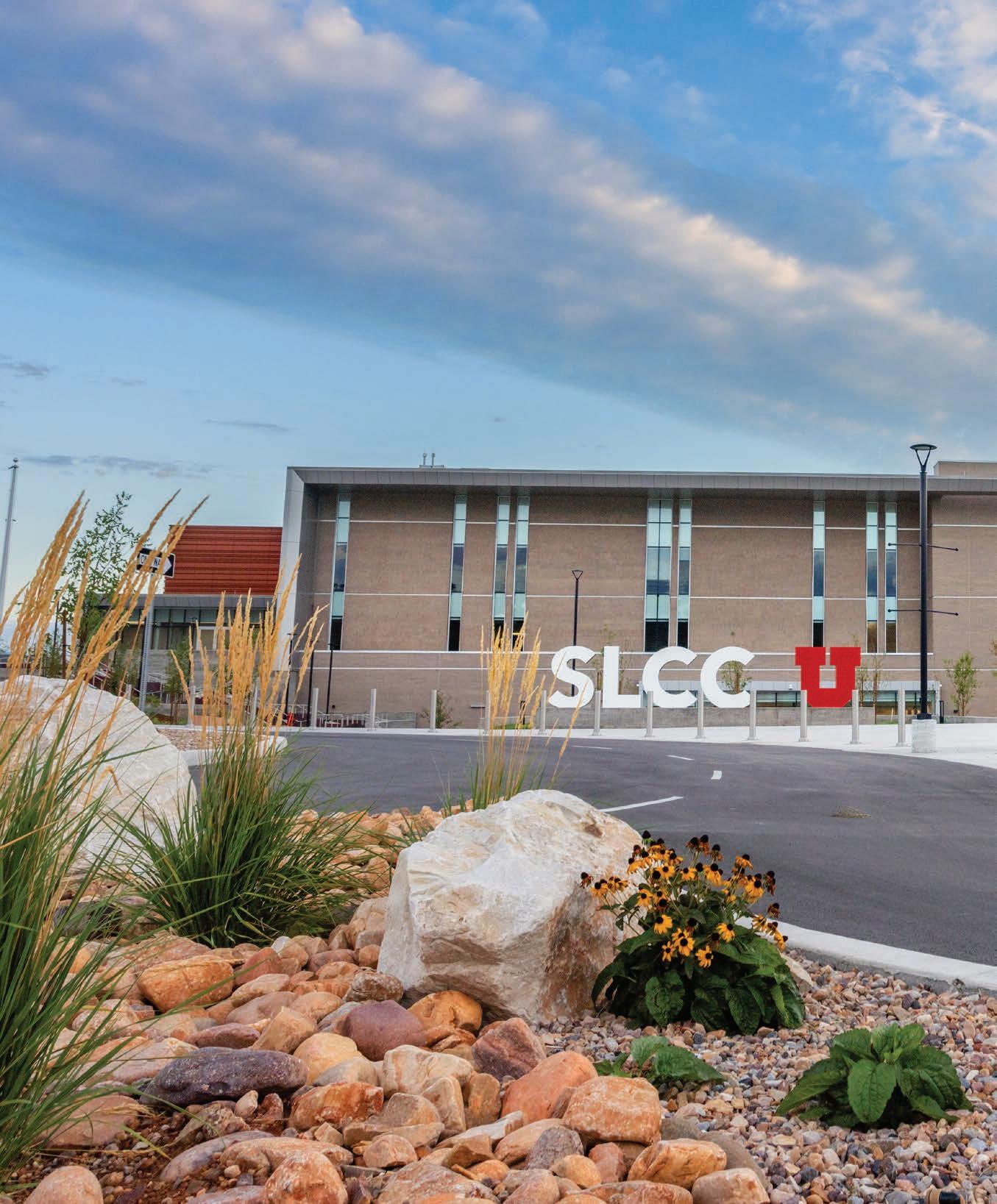
A Smooth Transition from Community to University
This is more than just a remarkable edifice. It represents an innovative collaboration between the U and Salt Lake Community College. Some students who study in the 90,000-square-foot Juniper Building in Herriman, Utah, enroll in first- and second-year classes through SLCC before seamlessly joining upper-division courses through the U—with the option to stay on the Herriman Campus while completing their bachelor’s degrees. The first three academic programs in this unique partnership are economics; human development and family studies; and financial planning and counseling—with many more on the way. The new campus in the southwest quadrant of the Salt Lake Valley also houses the first Engage U center to help students navigate admissions, registration, and more.
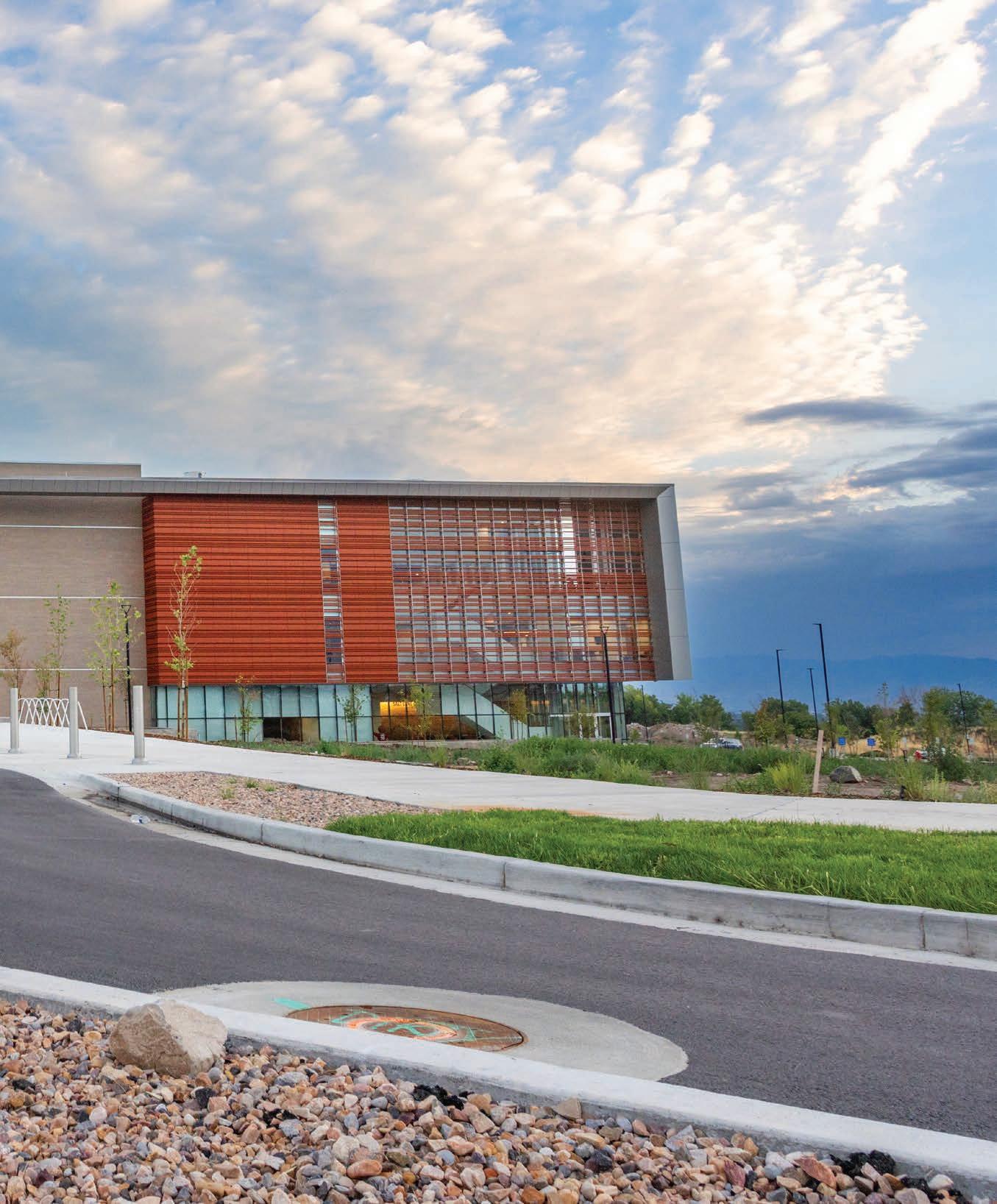 PHOTO BY JEFF BAGLEY
PHOTO BY JEFF BAGLEY
FALL 2023
Volume 32, No. 3
From tiny antennae to towering challenges of the digital age, discover how the Natural History Museum of Utah is using its vast collection of objects to teach kids about the big world of critical thinking. p. 28

WEB EXTRAS
More available at magazine.utah.edu
From ethical considerations to the black box nature of AI to its potential to enhance education and research in STEM fields, our panel had lots to say about the challenges and opportunities of artificial intelligence. Dive deeper into the discussion with more Q&As from our experts at magazine.utah.edu/AI
From Farm to Fable The hit musical Shucked is delighting sold-out audiences with its “corny” blend of country-western tunes and puns. And it took root right here on the University of Utah campus. Learn how the whimsical comedy musical made its way from Pioneer Theatre Company to Broadway and grew into a Tony-nominated sensation.

A Quest for Critical Thinking In an age of fake news and information overload, today’s kids need skills to help them separate fact from fiction and make evidence-based decisions. Learn how a science education program from the U’s Natural History Museum of Utah is helping thousands of middle schoolers become better critical thinkers.
Choose Your Own Adventure It’s time to unleash your wanderlust and academic ambition at the U. Dive into our travel hub of global opportunities, from studying gaming in Korea to making tangible differences in Ghana’s communities. The U’s global programs are more than just courses—they’re life-changing adventures. Ready to explore?
ON THE COVER
At the U Asia Campus, students get the same top-tier education they do in Salt Lake City, but in Incheon, South Korea. Here, R. Fresson captures the allure of Seoul, a frequent student getaway.
If you’ve been to a Utah Football tailgate, you’ve probably seen the famous crimson fire truck that serves as the star of the parking lot. The tradition of the truck goes back to the 1980s, and the group that stewards it goes back even further. See photos of the fire engine and tailgaters through the decades at magazine.utah.edu/firetruck
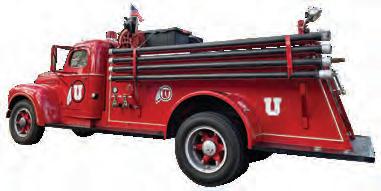
We asked about your favorite U sports photo memories, and you answered. Readers submitted more than 100 photos of their most-remembered athletics events. See all the finalists at magazine. utah.edu/sportsmemories

�0 �3 �4 �7
40 41 42 44 48
28 34
22
FEATURES
08
News from the u Community Imagine Trending Panel Stats Ask Forever u Expert Voices Class Notes Reflect DEPARTMENTS
09
�8
OF THE
HISTORY MUSEUM OF UTAH 2 UNIVERSITY OF UTAH MAGAZINE
COURTESY
NATURAL
Bonolo Monthe enrolled in the MBC program online to grow Maungo Craft, which sells gourmet jams, sauces, and syrups.

ECCLES.UTAH.EDU/MBC ENTREPRENEUR IS A VERB. START DOING. AN AFFORDABLE PROGRAM TO GROW YOUR BUSINESS ENTREPRENEUR A MASTER’S DEGREE ONLINE OR IN PERSON Now Enrolling for Spring & Fall 2024
STAFF
Christopher Nelson BS’96 MPA’16 PUBLISHER
J. Melody Murdock EXECUTIVE EDITOR
Seth Bracken EDITOR-IN-CHIEF
Lisa Anderson BA’02 ASSOCIATE EDITOR
David E. Titensor BFA’91 ART DIRECTOR
Marcia C. Dibble SENIOR EDITOR
David Meikle BFA’94 MFA’06 SENIOR DESIGNER
Brian Rasmussen BA’80 BUSINESS MANAGER

UMC Digital WEB DESIGN
Pentagram, Austin FEATURE DESIGN CONTRIBUTORS
Brooke Adams BS’91 MS’12 BS’21, RyLee Curtis BA’12 MPP’14, Elena Gardner, Vince Horiuchi BS’86, Julie Kiefer, Elizabeth Neff, David Pace MA’94, Lisa Potter, Heather Simonsen, Rebecca Walsh BA’93 MPA’18
UPDATE ADDRESS giving.utah.edu/updates
CONTACT US magazine@utah.edu | 801-213-1253
75 Fort Douglas Blvd. Salt Lake City, UT 84113
VISIT US ONLINE magazine.utah.edu
UNSUBSCRIBE FROM PRINT
If you prefer reading online and no longer wish to receive a print copy, email uniteupdates@utah.edu
University of Utah Magazine

(formerly Continuum) is published three times a year by University Marketing & Communications. Opinions expressed are not necessarily those of the university administration.
© 2023 University of Utah
A Season of Change
As autumn descends, I’m filled with a sense of excitement and anticipation for the changes and growth happening at the University of Utah. This fall marks the fifth consecutive year of welcoming our largest class yet, with more than 5,600 first-year students. The energy of our now 35,000+ student body is palpable and will only grow as we get closer to our enrollment goal of 40,000.
Discoveries at the U are also breaking records. For the tenth year in a row, research funding has grown, totaling $768 million in fiscal year 2023—the most we’ve ever received! Our students, faculty, staff, and donors are working together to bring solutions to some of society’s biggest challenges. And, we’re one step closer to our goal of $1 billion in research support.
The physical footprint of the U also expanded this fall with the opening of the Herriman Campus, a partnership with Salt Lake Community College. Students can earn an associate degree by taking SLCC
courses and then seamlessly transfer to the U to finish a bachelor’s degree, all at the Herriman location (see p. 2). We’re eager to pave new educational pathways for even more Utahns.
And last but not least, 2022-23 was one for the history books for Utah Athletics. In total, we celebrated seven conference championships, six combined individual and team national championships, and six national top-16 finishes. (Flip to p. 16 to test what you remember about the record-breaking ’22-23 year.) I want to thank our Pac-12 peers for an exciting 11 years of competition and for their collegiality on and off the field. Our athletes will finish the season strong while also looking ahead to the exciting prospects of the Big 12 Conference next fall, where new rivalries will be sparked and old ones rekindled. Indeed, it’s a season of growth and change at the U. The stories in this issue of Utah Magazine share even more examples of our institution’s ambitious ascent, as we fortify our national reputation and strive to be a top 10 public university with unsurpassed societal impact.
PRESIDENT TAYLOR RANDALL HBA’90
u President’s Perspective
4 UNIVERSITY OF UTAH MAGAZINE
ILLUSTRATION BY ERIC HANSON
Med School Milestone
The U broke ground last fall on the new home for the Spencer Fox Eccles School of Medicine, made possible by funds from a landmark gift of $110 million from the George S. and Dolores Doré Eccles Foundation and the Nora Eccles Treadwell Foundation

Dear Mr. Eccles, I am incredibly grateful for your truly magnanimous gift. The impact a new world-class medical school will have on the newest generation of medical students, professors, and their patients and families will have everlasting benefits beyond anything any one of us can imagine. Your gift is truly historic. Thank you. I can’t wait to take a tour when the doors open.
Campus City
Demand
Town Magic,” Summer 2023].

So happy that my school is expanding. I am now 82 years old, but I attended the U of U for nine years—the time it took while working part time and raising my five children. My husband was my rock! I achieved my master’s degree and worked for Intermountain Health Care as a human resource manager for many years until retiring. I will always treasure my school! Keep up the good work!
Taking on Student Mental Health
I’m deeply grateful for the Huntsman Mental Health Institute article on mental health. It’s a much-needed initiative, one I wish existed during my student years at the U. Back then, mental health resources were scarce, and I nearly lost myself, fearing judgment and rejection due to my emotional struggles. As a parent, I’m comforted knowing my future University of Utah children will be encouraged to seek help without fear. Kudos for shifting the mental health stigma!
ANONYMOUS

U pride is alive and well in Norway. Dozens of alumni gathered last May at a fjord-side restaurant in Oslo to celebrate the 75th anniversary of the U ski team and the J. Willard Marriott Library’s Ski & Snow Sports Archives.

As youth continue to struggle with emotional well-being, the U is deploying measures to help. [“Mind Matters,” Summer 2023].
for housing at the U is skyrocketing, and the U is planning to bring 5,000 new beds to campus and ditch the reputation of being a commuter school. [“College
DONNA SALINAS BA’82 BA’84 MS’95
[“Groundbreaking Development,” Winter 2023].
Comments u We want to hear from you!
the discussion at magazine.utah.edu or email us at magazine@utah.edu. Comments may be edited for length and clarity.
SPOTLIGHT
SANDRA G. CALMAN HBS’84 MD’88 MONTARA, CA
Join
SOCIAL
FALL 2023 5


Tune in every Tuesday to the U Rising podcast to learn about exciting research, what’s happening on campus, and how it will impact your community. From conversations about the Utah Bionic Leg to what one researcher is learning about how dust impacts snowmelt, the U Rising podcast is your place to stay up to date on the latest innovations from the U.
A Beacon of Hope
Huntsman Cancer Institute grows to more than 1M square feet with new building and announces new facility in Utah County

The U’s Huntsman Cancer Institute is expanding its reach and caring for more people than ever. It recently opened a new 220,000-square-foot facility on the north end of its campus, and it has plans for expansion with a new facility in Utah County.
The $178 million Kathryn F. Kirk Center for Comprehensive Cancer Care and Women’s Cancers opened this past spring and increases the cancer hospital’s inpatient capacity by nearly 50 percent, adding exam rooms, surgical suites, screening facilities, and other services. With the new addition, Huntsman Cancer Institute grows to more than a million square feet of state-of-the-art cancer care and research space.
“Today, as we open this wonderful expansion, we recommit to providing the world’s best in compassionate, science-based care for our patients,” Mary Beckerle, CEO of Huntsman Cancer Institute, said at the opening celebration this past May.
The cancer center raised more than $128 million in philanthropic support for this expansion. The major donors include the Spencer and Kristen Kirk family, the Huntsman Foundation, Karen and Scott Smith, The Sigma Chi International Frater-
nity, The Church of Jesus Christ of Latter-day Saints, and dōTERRA. More than 275 individual gifts helped make the building possible.
At the opening celebration, Spencer Kirk BA’85 MBA’87, son of Kathryn F. Kirk BS’47, spoke about losing his mother to breast cancer and wanting to honor her legacy. “She spent her life in service to her family and her community,” he said. “That spirit guides our family, and we are honored to help further the mission of Huntsman Cancer Institute. The Kathryn F. Kirk Center is only possible because of a community of donors who joined our family to make this comprehensive cancer center a reality.”
In addition to this significant expansion, the new comprehensive cancer center in Utah County will address the monumental population growth in Utah and reduce the travel burden many patients face. The U announced a $75 million matching gift from the Huntsman family for the expansion, the largest single donation from the Huntsman Foundation, initiating a call to the community to raise the matching support needed to move the project forward.
The U is among the top schools in the nation in preparing teachers on reading instruction. The U’s undergraduate teacher preparation program earned an “A” grade and was among just 23 percent nationwide to meet literacy standards for effective reading instruction methods, according to the National Council on Teacher Quality (NCTQ).
The Huntsman Mental Health Institute and the Utah Department of Health and Human Services celebrated the first anniversary of the 988 Suicide and Crisis Lifeline in July. The 24/7 service has provided essential support to individuals in crisis throughout Utah, with 90 percent of calls resolved over the phone. The lifeline’s success reflects Utah’s commitment to mental health, with significant resources invested to ensure accessible care for all.

NEWS ROUNDUP
WITH HOSTS CHRIS NELSON & JULIE KIEFER
IMAGE BY EMILY BADE/ARCH NEXUS 8 UNIVERSITY OF UTAH MAGAZINE
SPOTLIGHT Tooele, Uintah, and Carbon Counties
Remote Support for Newborns in Need
When Kaylynn Waters welcomed her baby boy, Daxton, into the world at Mountain West Medical Center in Tooele, Utah, everything was fine at first. But the next day, his oxygen levels dipped. His doctors needed the expertise of a neonatologist—a specialist not on staff at the small community hospital. Enter U of U Health’s service for critically ill newborns: TeleNICU. Currently offered at three hospitals in Utah— Mountain West, Castleview Hospital in Price, and Ashley Regional in Vernal—it’s one of several U of U Health telemedicine services.
TeleNICU operates like a Zoom call on wheels. The telehealth setup is rolled to the patient’s location, where pediatricians have a real-time, visual consultation with a U of U Health specialist.
“It’s almost as if we’re at the bedside,” says Kelli Lund BS’03 MD’09, a neonatologist with U of U Health. “We can see the color of the baby’s skin and look at their breathing.” The neonatologist can give recommendations and help practitioners at the bedside work through advanced measures. AirMed is on the call in case the baby needs to be airlifted to the university. That was the case for Daxton. Waters says it was a smooth transition because university providers were already up to speed on his case. After more tests, they learned Daxton had abnormally high blood pressure in his lungs. He stayed in the hospital for a week before making a full recovery.
Gordon Duval, a pediatrician at Mountain West, calls TeleNICU the best of both worlds. “You can be at your community hospital and be close to home,” he notes, “but you can also have the benefit of having a neonatologist available.”
Waters says the service brought her peace of mind during a worrying time. Now, she says, “Daxton is doing amazing. He’s an extremely chunky, super happy baby.”
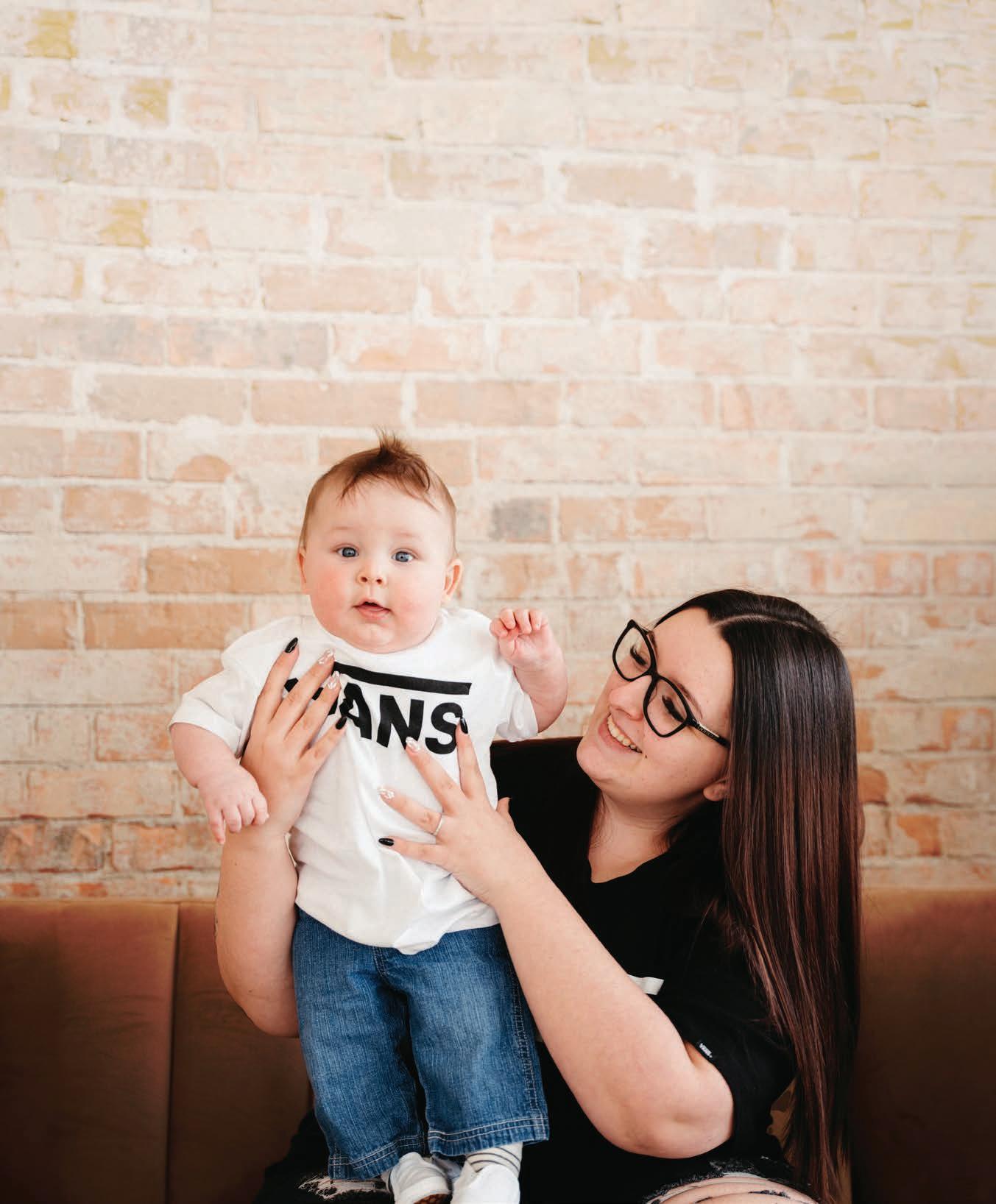
U of U Health plans to expand TeleNICU to more hospitals throughout the region.
As the state’s flagship university, the U is committed to improving the lives of all Utahns. These stories highlight how we’re making an impact in every county.
PHOTO BY C. STONE PHOTOGRAPHY FALL 2023 9
Dishonest with the Doc
Have you ever lied to your physician? If not, you’re in the minority. More than three-fourths of patients have been dishonest with their doctors at some point, according to a 2018 study by researchers including Angela Fagerlin, chair of the Department of Population Health Sciences at University of Utah Health. The most common reasons: embarrassment, fear of being judged for their behavior, and worries about the cost of treatment.
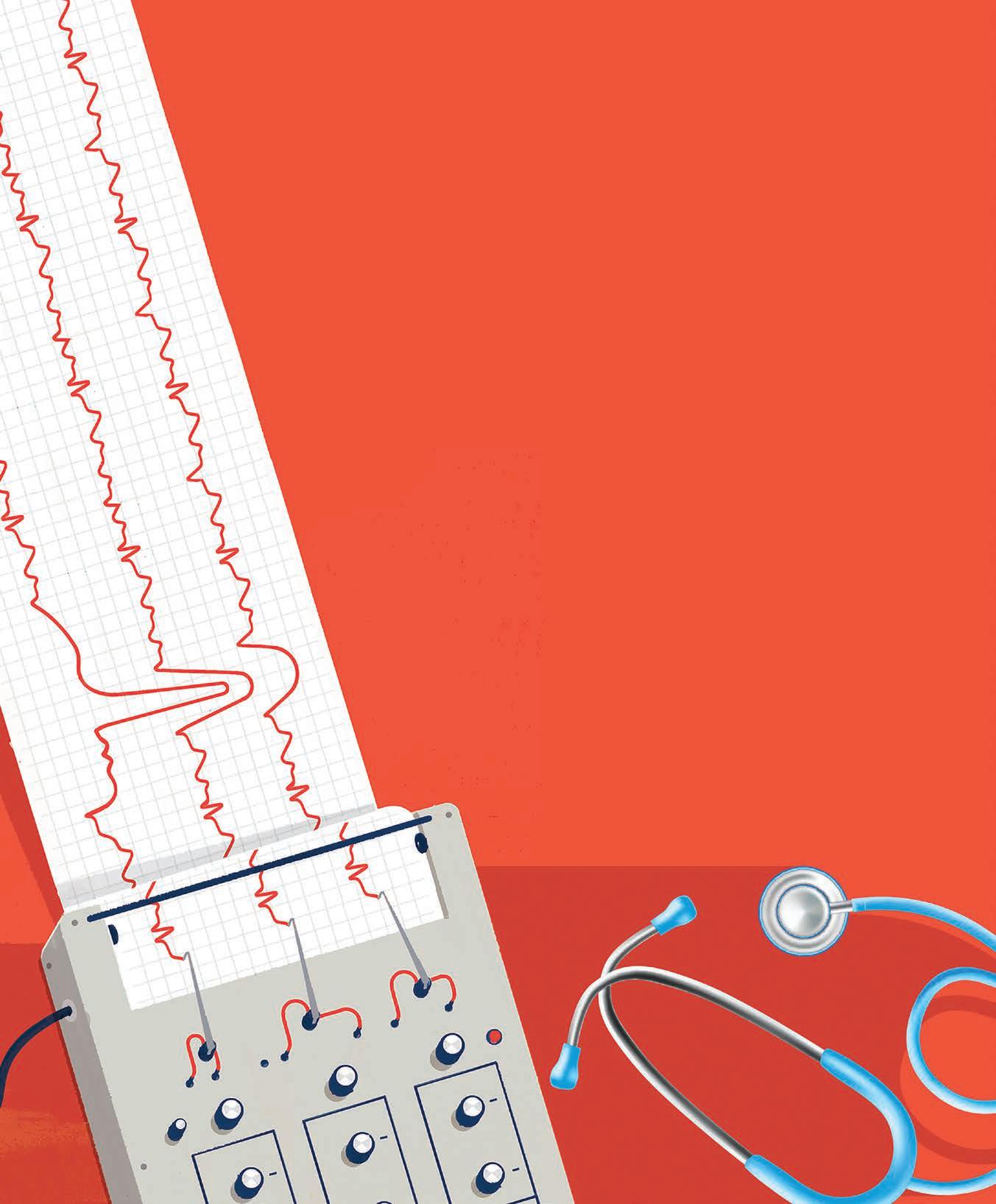
But dishonesty can lead to misdiagnoses and inappropriate treatment. Even seemingly harmless omissions like not owning up to taking herbal supplements may increase health risks. A patient who is prescribed an anticoagulant, for example, could be at risk for bleeding if she doesn’t tell her physician she takes turmeric—a supplement that affects blood clotting.
“Those are the kinds of things that affect people to the tune of over $3.5 billion in care that was rendered inappropriately,” says Tamara Masters MBA’88 PhD’12, a U researcher in the David Eccles School of Business who studies consumer judgment and decision-making.
A new study co-authored by Masters and BYU researcher Mark Keith tested whether privacy notices would lead patients to be more honest. U of U Health internist Rachel Hess and BYU researcher Jeffrey Jenkins also contributed to the study. Participants filled out an online survey about exercise frequency, alcohol and tobacco use, sexual activity, and use of recreational drugs. The researchers employed a new mouse-tracking technology developed by Jenkins that evaluates honesty by looking at distance and speed of mouse movements.
“If it takes someone longer to arrive at an answer or the mouse moves away, that means they’re having conflict about what they want to say,” explains Masters.
The results were surprising: participants who had received a privacy notice immediately before the questionnaire were less honest than the control group. What explains the counterintuitive findings? Patients may become more guarded after being reminded that they’re about to disclose sensitive info, explain the researchers. They suggest clinicians may not want to offer privacy policies at the same time they collect a patient’s health data.
10 UNIVERSITY OF UTAH MAGAZINE
Shock to the System
A U study finds health risks associated with popular wearable devices
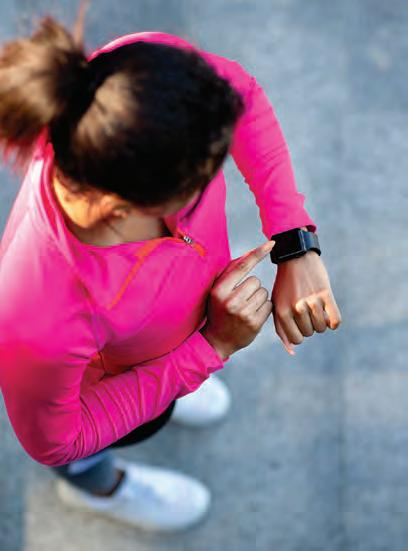
Wearable devices like smartwatches have become common tools for health-conscious individuals in the digital age. However, a recent study conducted in a lab at the U has revealed there may be potential health risks from some of these electronic fitness gadgets, and in certain cases, they could prove fatal for those who use cardiac implantable electronic devices (CIEDs) like pacemakers, implantable cardioverter defibrillators, and cardiac resynchronization therapy devices.
The study—led by U electrical and computer engineering assistant professor Benjamin Sanchez Terrones and U of U Health associate professor of medicine Benjamin Steinberg—focuses on wearable devices such as the Samsung Galaxy Watch 4, Fitbit smart scales, and Moodmetric smart rings. These devices utilize sensing technology that could potentially interfere with CIEDs.
“These results call for future clinical studies evaluating the translation of our findings to patients with CIEDs and using these wearable devices,” explains Sanchez Terrones.
The study, published in the scientific journal Heart Rhythm, raises concerns specifically about smartwatches, smart scales, and smart rings that employ bioimpedance sensing technology. This technology emits a minute electrical current into
1 in 4 Parents Lied about Their Kids’ COVID-19 Status, Study Finds
More than 25 percent of parents surveyed report that they were less than truthful about their children’s COVID-19 status or that they didn’t follow the disease’s preventive guidelines for their offspring during the pandemic, according to a nationwide study led in part by scientists at U of U Health.
The finding published in JAMA Network Open last spring raises concerns that parental reluctance to disclose that their children had the disease or didn’t adhere to COVID-19 prevention protocols could have contributed to the spread of the infection and exacerbated its high rates of hospitalization and death, says Angela Fagerlin, senior author of the study and chair of the
the body to measure various parameters. While it is imperceptible to the user, the study found that the electrical currents from these wearables can disrupt and confuse cardiac implantable devices, potentially leading to malfunctions.
The researchers stress that the study does not indicate an immediate or definitive risk to users of these wearables. However, they believe it is crucial to conduct further investigations involving a wider range of devices and potentially include patients with CIEDs to ensure patient safety and fully understand the clinical implications.
BY THE NUMBERS
The Utah strip of the Navajo Nation is one of the most isolated and underserved areas in the lower 48. Access to specialized health care is extremely limited, and there is an urgent need for eye care.
The John A. Moran Eye Center, in partnership with Utah Navajo Health System, Inc., has been providing free pediatric and adult eye care to this population since 2013—including vision screenings, glasses, and sight-restoring surgery. In just two weekends last May, Moran Eye Center practitioners provided these services:
Conducted 70 patient visits
Conducted50
child eye exams
Department of Population Health Sciences at U of U Health.
Overall, about 26% of parents misrepresented a child’s COVID-19 status in some way. Of those:
• About 60% reported that they deceived others about their child’s vaccination status when they wanted their unvaccinated children to participate in an activity that required vaccination.
• Among parents who reported misleading others about their child having COVID-19 or not following public health recommendations, more than 50% reported doing so because they wanted the freedom to do what they thought best for their family.
• Nearly 43% of parents said they didn’t tell others that their children had COVID-19 because they didn’t want them to miss school.
• About 35% of parents didn’t disclose that their child had COVID-19 because, in part, they could not afford to miss work to care for them.
Distributed
115 pairs of new eyeglasses
15sight-restoring cataract and pterygium surgeries
Performed
u Campus News
FALL 2023 11
Intellectual Exchange
The Tanner Humanities Center celebrates 35 years of creating spaces for engaging conversations
On a windy night in February 2022, poet and lawyer Reginald Dwayne Betts sat across from Erika George, director of the Tanner Humanities Center, as she asked him direct questions about his path out of prison. Betts, who was incarcerated at 16 years old and went on to become a critically acclaimed writer, Yale Law School graduate, and a MacArthur “genius grant” fellow, laughed and said, “You’re starting with a hard question.”
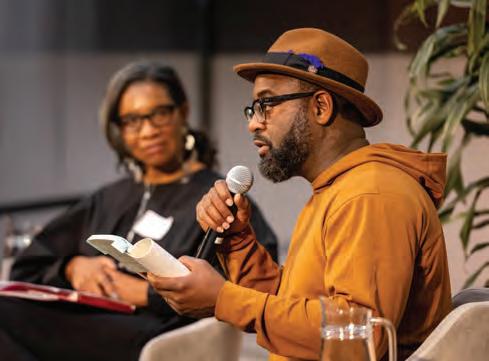
Without missing a beat, George replied, “I don’t know that it gets any easier.”
Over the rest of the night, Betts spoke freely to an enraptured audience, expanding on his journey as a writer and advocate and the role of poetry in healing from the violence of incarceration. Even on a wide stage, the conversation evoked an intimate conversation in a living room. After the talk, audience members flocked to microphones to ask questions.
This kind of open and intellectual banter is characteristic of the kind of spaces the Tanner Humanities Center creates. Since its founding in 1988, the center has provided myriad opportunities to exchange complex ideas, ask hard questions, and share meaning and solutions through free events that are open to the public.
This year, the center is celebrating its 35th anniversary. Originally founded as the Utah Humanities Center, it was endowed in 1995 through the family foundation of Obert C. Tanner BA’29 JD’36 (1904-1993) and renamed for Obert and his wife, Grace ex’35. Tanner was an entrepreneur and philanthropist. He also taught philosophy at the U for more than 25 years. In 1978, he helped found the Tanner Lectures on Human Values, which brings leaders to speak at nine different universities around the world. Aimed at better understanding human behavior and values, Tanner said at the time of founding the series, “This understanding may be pursued for its own intrinsic worth, but it may also eventually have practical consequences for the quality of personal and social life.”
The center has hosted writers, theorists, historians, artists, Nobel Prize winners, Pulitzer Prize winners, and other leaders, including Margaret Atwood, Tony Kushner, Spike Lee, Anita Hill, Neil deGrasse Tyson, and many more. AMELIA
DIEHL
PICTURE
“I picked Utah kind of randomly. I knew that there was a climbing team here, so I went to tryouts, and I got on the team. Last year, someone sent me an application for a show called The Climb , an HBO rock-climbing competition series. I filled it out without thinking about it and thought, ‘This would be funny to do.’ Then I got a callback, and they wanted to interview me, and another interview and then a Zoom. Then they were like, ‘Okay, we want you to leave in a week.’ ” Read more of student Robyn Ragins’ story at magazine.utah.edu/ theclimb
Web Extra Read more about the impact of the Tanner Humanities Center at magazine .utah.edu/tanner

u Campus News
12 UNIVERSITY OF UTAH MAGAZINE
Off to New Adventures at Swoop Camp



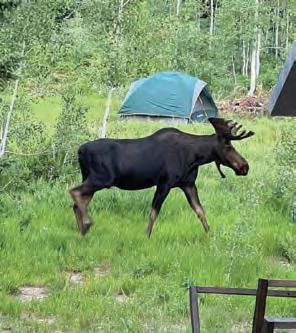
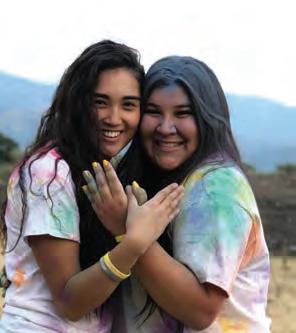

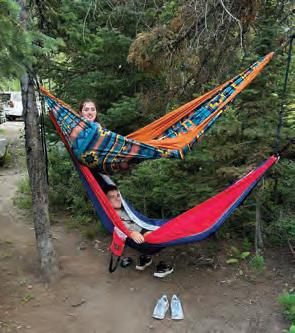


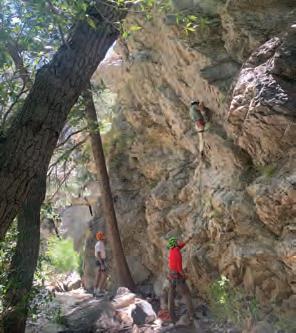
Getting oriented to college is exciting on its own. And then there’s Swoop Camp—an extension of new student orientation that has participants navigating rivers and mountains after learning to navigate the University of Utah. Swoop Camp gives students a chance to make social connections and learn more about the U while exploring their new backyard. They can opt for day-trip adventures like kayaking, paddleboarding, and rock climbing, or Swoop Camp Backcountry—seven days of trekking in the wilderness before embarking on the school year. Check out some Swoop Camp Adventures and more on Instagram @uofuswoopcamp and at facebook.com/swoopcamp.


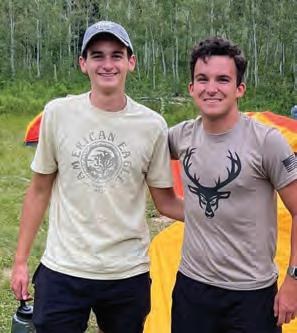
FALL 2023 13
How do you envision the future advancement of AI?
The role of AI in STEM fields will evolve significantly in the coming years with an explosion of new tools to assist with data analysis, simulation, optimization, and modeling. There is growing interest in generative modeling to create novel data instances and simulate complex systems, enabling researchers to explore new possibilities and generate valuable insights. AI can revolutionize data visualization so researchers can gain deeper insights from complex datasets. Additionally, unsupervised learning algorithms can uncover hidden patterns and structures in data. And finally, AI technologies have the potential to automate the extraction of relevant information from academic papers, enabling researchers to stay up to date with the latest advancements more efficiently.
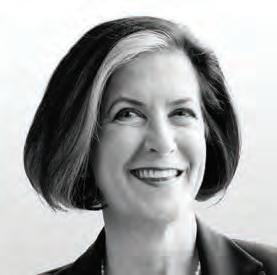
Scholars and writers in humanities disciplines have been grappling with concepts of artificial consciousness and mechanical humans for centuries. Sophisticated new technologies such as ChatGPT have suddenly made engaging with artificial voices a daily occurrence. Every literature professor has seen students who approach fictional characters as if they were real. Disturbing events in fictional texts often trigger real-life emotions. We bring this experience to AI conversations. Currently, AI writing is technically proficient but culturally evacuated. Until culturally inflected AI is developed, models such as ChatGPT will stand apart from culture. Knowledge production within culture will not fully be absorbed by AI. Specific and local cultural knowledge will become more valuable.
I’m excited about AI’s wide-ranging applications. But we need to balance progress with prudence. AI models today struggle with factuality. For example, some can generate fake images or authoritative-looking text that is factually incorrect. We may be OK with a bit of creative truth-twisting for entertainment applications, but factual errors would be unacceptable if an AI system were to handle our tax preparations. There are also privacy issues to consider. For example, would we be okay if an AI-based system ingested our private health data? Ownership and liability present thorny issues with using AI. When AI produces content or operates a vehicle, determining ownership or liability becomes crucial. These are some of the complex issues we must navigate as we advance AI technology.
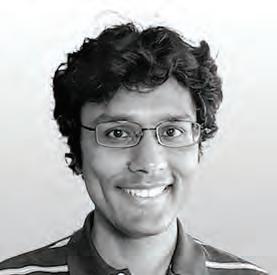
I think everyone should play a role in shaping the development and use of AI. We need educated and engaged publics to have a more democratic system for deciding what kinds of AI we want in our society. Right now, these kinds of decisions are being left up to a few giant corporations, and we need vastly more democratic processes to make decisions that affect all of us. I’d like to see more oversight on AI to explain how the AI is accomplishing the task it is set and to provide information needed to audit the AI for ethical violations like bias, polarization, disinformation, and general harm.

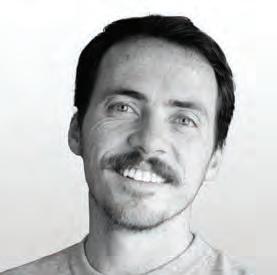 Taylor Sparks BS’07, Associate Professor of Materials Science and Engineering
Hollis Robbins , Dean of the College of Humanities
Vivek Srikumar, Associate Professor of Computer Science
Elizabeth Callaway, Assistant Professor of English
Taylor Sparks BS’07, Associate Professor of Materials Science and Engineering
Hollis Robbins , Dean of the College of Humanities
Vivek Srikumar, Associate Professor of Computer Science
Elizabeth Callaway, Assistant Professor of English
Panel
14 UNIVERSITY OF UTAH MAGAZINE
Web Extra Dive into the discussion with more Q&As from our experts at magazine .utah.edu/AI
Trailblazing U Alum Poised to Lead NIH
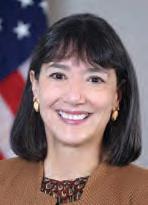
U alum and former member of the Huntsman Cancer Institute external advisory board Monica Bertagnolli MD’85 was nominated in May as the 16th director of the National Institutes of Health. If confirmed by the U.S. Senate, she would be the second female director of the NIH and oversee the largest public funder of biomedical research in the world, which has a budget of more than $47 billion and is composed of 27 separate institutes and centers. She’s currently director of the National Cancer Institute (NCI), the first woman to serve in that role. She
Challenging Neuroscience Assumptions
was also the first woman to lead the Dana-Farber Cancer Institute’s surgical oncology division.
A statement from The White House lauded the U alum and physician-leader as an individual with the vision and leadership needed to deliver on the NIH’s mission to seek fundamental knowledge, make new discoveries, and promote human health.
“Dr. Bertagnolli has spent her career pioneering scientific discovery and pushing the boundaries of what is possible to improve cancer prevention and treatment for patients and ensuring that patients in every community have access to quality care,” President Joe Biden said in the statement. “She has brought
together partners and resources from different sectors to launch groundbreaking efforts in cancer prevention and early detection, a national navigation program for childhood cancers, and additional programs to bring clinical trials to more Americans.”
The daughter of first-generation Italian and French Basque immigrants, Bertagnolli grew up on a ranch in southwestern Wyoming. She graduated from Princeton University with a bachelor of science in engineering before attending medical school at the U. As a member of Huntsman Cancer Institute’s advisory board, she played a key role in advising strategy for cancer research efforts.
A newly discovered brain mechanism is linked to anxiety and OCD
University of Utah Health scientists have discovered that microglia, a minor type of cells in the brain, play a crucial role in controlling anxiety-related behaviors. The findings challenge the prevailing belief that neurons are solely responsible for behavior regulation.

“A small amount of anxiety is good,” says U Nobel Laureate Mario Capecchi, the senior author of the study. “Anxiety motivates us, spurs us on, and gives us that extra bit of push that says, ‘I can.’ But a large dose of anxiety overwhelms us. We become mentally paralyzed, the heart beats faster, we sweat, and confusion settles in our minds.”
The study used mice exhibiting obsessive-compulsive spectrum disorder (OCSD)-like behaviors, characterized by excessive self-grooming. Previous research had identified a mutation in the gene Hoxb8 as a cause of chronic anxiety and excessive grooming in these mice. The surprising discovery in this study was that microglia, which make up only 10 percent of brain cells, were responsible
for these behaviors, contrary to the perception that they primarily function as “trash collectors” for dying neurons. Using optogenetics, a technique combining genetic engineering and laser light, the researchers stimulated specific populations of microglia in the brain. The results were astonishing—activating certain microglia populations induced anxiety-related behaviors, while stimulating others caused the mice to groom themselves excessively. The study demonstrated that microglia and neurons communicate with each other, with the former influencing the latter to generate distinct behaviors.
“Conventionally, it is thought that only neurons can generate behaviors,” says lead author Naveen Nagarajan. “The current findings shed light on a second way that the brain generates behaviors using microglia.”
Moreover, the researchers identified a delicate balance between two populations of microglia. While Hoxb8 microglia acted as a brake, preventing anxiety and
OCSD-like behaviors, non- Hoxb8 microglia acted as an accelerator, driving the onset of these behaviors. Imbalance between these populations could lead to pathological conditions.
Understanding the location and type of microglia is crucial for fine-tuning anxiety and OCSD behaviors. By deciphering the intricate communication between microglia and neurons, scientists hope to identify potential therapeutic targets for managing excessive anxiety in patients.
“This work is unique and has challenged the current dogma about the role of microglia function in the brain,” Nagarajan concludes.
into the unexpected role of microglia in regulating anxiety and OCSD behaviors.
Campus News u
FALL 2023 15
U Nobel Laureate Mario Capecchi and lead author Naveen Nagarajan delve
A Year of Champions
Take our Utah Athletics quiz featuring some highlights from a record-breaking year
3
How well do you know Utah Athletics? It’s time to test your knowledge! U student-athletes truly had a banner year in 2022-23, leading the Utes to bowl games, national championships, and the most conference titles in school history. Let’s dive into this past year’s stats and see just how familiar you are with our exceptional programs.

If you get four or fewer correct, you need to keep up with the U—there’s more to discover. And if you answer more than four correct, you’re a loyal fan—congrats!
1
Which of the following teams won a conference title this season?
a. Football
b. Skiing
c. Women’s basketball
d. Gymnastics
e. Men’s tennis
f. Lacrosse
g. Softball
h. All of the above
2
After winning its 16th national title in 2023, how many consecutive NCAA championships has the skiing program won?
a. 2
b. 3
c. 4
4
Which athlete(s) secured individual NCAA titles at the championships?
a. Madison Hoffman in Women’s Slalom
b. Madison Hoffman in Women’s Giant Slalom
c. Novie McCabe in Women’s 5K Freestyle
d. Novie McCabe in Women’s 20K Classic
e. All of the above
NCAA all-around and beam champion gymnast Maile
O’Keefe beat out UCLA’s Olympic silver medalist Jordan Chiles and became the first U gymnast in history to record a perfect score on beam at the NCAA championships. When did Utah last have an all-around champion?
a. 2015
b. 2011
c. 1999
d. 1987 5
After finishing third at this year’s national championships, how many top-10 finishes do the Utah Red Rocks have in the program’s 47-year history?
a. 25
b. 36
c. 44
d. 46
6
The softball team obtained its highest ranking in program history. What was their final ranking?
a. 10th
b. 9th
c. 7th 7
The women’s basketball team claimed their first Pac-12 title in 2023 and went on to make the Sweet 16. How many times has the team made it that far in the NCAA tournament?
a. 1
b. 2
c. 3
d. 4 8
This year, 135 student-athletes earned a perfect 4.0 GPA, and 420 made the Dean’s List. How many straight semesters has the average U student-athlete GPA been 3.0 or higher?
a. 10
b. 17
c. 24
d. 34
PICTURE
We turned to social media and asked for your favorite U sports photo memories. And you all knocked it out of the park! From the more than 100 fantastic submissions, we chose this image of the Aberton family at the 2022 Rose Bowl game as our favorite. But there are so many more. Go to magazine.utah.edu/sportsmemories for the other finalists. From left to right: Mark Aberton, Laura Aberton, Kyle Aberton, Sami Aberton, Ashley Aberton-Evans, Adam Evans
u Athletics News
TM 16 UNIVERSITY OF UTAH MAGAZINE Answers: 1) h. All of the above 5) d. 46 2) c. 4 6) c. 7th 3) e. All of the above 7) c. 3 4) c. 1999 8) d. 34
HOMETOWN Estella, Spain
YEAR IN SCHOOL
Senior
MAJOR Business administration
FIRST COLLEGE VICTORY
Claiming the individual title at the Oregon State Invitational
2022-23
POSTSEASON HONOR
Named to the Second-Team
All-Pac-12
STROKE AVERAGE

71.7, a team best
FAVORITE COURSE
Royal St. George’s in England
DREAM GOLF BUDDIES
Severiano Ballesteros, Tiger Woods, Rafael Nadal

REFUEL FOOD
Burgers
GO-TO FILMS
The James Bond series and Mission Impossible
FALL 2023 17
Comprehensive Career Support
Most parents of soon-to-be college students share a top concern for their kids: Will they have a job when they graduate? New U Career Services Center director Katie Hoffman-Abby BS’84 and her team of nearly 60 full-time professionals are here to arm students with the resources and support they need to help them land that well-paying job—a process that starts long before they earn their degree.
With over two decades of private-sector job placement experience, Hoffman-Abby spearheaded the center’s expansion following a successful pilot project aimed at boosting post-graduation employment rates and starting salaries for select colleges and departments. As the university-wide implementation of these approaches begins and the center expands in the Robert H. and Katharine B. Garff Building, we caught up with Hoffman-Abby.

What advice do you give to folks just starting their education?
Come visit us. Come early and come often. The earlier you start planning, the better. Even if you don’t know exactly what you want to do after you finish school, you can start looking into internships, meeting with career coaches, and getting a head start.
What relationship do you have with employers?
We recognize that building and maintaining outstanding relationships with all kinds of employers—from startups to Fortune 500 companies and everything in between—will help our students and the community. Rather than let organizations simply approach us for an occasional job placement, we’re proactively reaching out. Our corporate outreach team develops industry-specific expertise to build those relationships. Increasingly, internship pipelines are key to finding and hiring excellent full-time candidates, and our corporate team can help develop internship programs for companies. We want the U to be top of mind when those companies are ready to fill positions.
What other advice would you give to any student concerned about finding a job?
Start exploring right away. If you didn’t get an early jump, start wherever you are. Do at least one internship. Introduce yourself to employers and alumni visiting campus—they want to meet you. Attend panels, workshops, and career events whenever you can. Join clubs and organizations—the students you connect with there can form the basis of a valuable professional network. We boost student success by coaching on self-branding, job search strategies, effective interviews, negotiating offers, and so much more. Get a LinkedIn headshot and borrow interview clothing from our career closet—or keep it if you’re in need. Our team is truly remarkable at what they do and can help every student who walks through our doors, so come see us.
18 UNIVERSITY OF UTAH MAGAZINE
PHOTO BY DAVE TITENSOR
Envy Alert! What Ignites Jealousy More: Experiences or Gadgets?
Imagine browsing your social media feed and discovering two purchases made by friends: a tropical vacation and a top-of-the-line TV. Which purchase would you be more likely to covet? Researchers at the U found that our envy depends on our focus as observers, as noted in their study published in the Journal of Business Research.
“When we focus on the people and their happiness, we tend to envy experiential purchases more,” says Joowon Park, lead author and assistant professor of marketing at the U’s David Eccles School of Business. Conversely, when we concentrate on the products and their superiority, we tend to envy material purchases more.

Why do we envy experiential purchases when we focus on the people? Experiences like vacations and concerts shape our identity and can bring more happiness than material possessions, making them enviable.
And what about when we focus on the products? Material possessions like electronics and clothes are objectively comparable, unlike experiences, which are subjective. Comparability can also lead to envy.
The researchers argue that as social beings, we naturally focus more on people than products.
“People will naturally compare themselves to others unless prompted to think specifically about the purchase,” says Tamara Masters BSN’83 MBA’88 PhD’12, a co-author and professor at the David Eccles School of Business.
Career Aspirations Ahead
Fifth and sixth graders experience their dream careers at Imagine U Day

Some of the latest campus guests who’ve come to learn about potential careers weren’t as tall as most student recruits. Perhaps that’s because they were still in elementary school. After writing essays on what they would like to be when they grow up, 170 fifth and sixth graders from local schools were treated to a catered career day on campus with nine themed career experiences ranging from nursing to education and athletics.
The venture connected U of U Health and University Neighborhood Partners with several schools in West Valley City that have student populations made up of diverse learners, with close to 47 percent of students identifying as Hispanic or Latino, says RyLee Curtis BA’12 BA’12 MPP’14, community engagement director for U of U Health.
For Whittier Elementary School Principal Jennifer Bodell, Imagine U Day presented a unique opportunity to encourage her students to think about college.
“For these students to see that being successful on a college campus can be a reality for them, it’s truly just incredible,” says Bodell. “It’s also a unique opportunity for us as educators to send our students off to junior high ready to learn—to follow their passions and to know that at the end of their K-12 journey, they are ready for
In its second year, Imagine U Day is designed to engage with and build lasting partnerships with students, parents, and educators in westside communities, notes Curtis. It has now expanded from a single elementary school to three and aims to illustrate that a secondary education is obtainable, and all are welcome.
Campus News u
higher education.”
PICTURE
FALL 2023 19
Chase Stoner, founder of Outkits, an online marketplace for vintage sports shoes, is taking the sneaker game to new heights. With a focus on rare and limited-edition kicks, Outkits offers unique finds with a story behind each pair. Through the Master of Business Creation program at the U’s Lassonde Entrepreneur Institute, Stoner is growing his business, expanding his collection, and aiming to be the go-to platform for vintage shoes and clothing in online retail.
Students dive into hands-on learning at the College of Nursing’s simulation lab, engaging with doctors and interactive mannequins.
Revolutionary Breakthrough
A U scientist’s innovation could transform the global titanium market
Titanium metal, prized for its high strengthto-weight ratio, corrosion resistance, and biocompatibility, is a critical material in aerospace, defense, and medical applications, but its wider use is obstructed by excessively high costs.
That’s where materials sciences and metallurgical engineering professor Zhigang Zak Fang comes into play. A recent recipient of the prestigious Humboldt Research Award, Fang has developed a breakthrough technology that can produce high-quality, low-carbon emitting titanium powder at a significantly reduced cost. Known as the Hydrogen Assisted Metallothermic Reduction (HAMR) process, the technology developed by Fang is based on the discovery of new science about the effects of hydrogen on the stability of titanium solid solutions with high oxygen content (up to 14wt%.)
“Titanium metal is difficult to produce because of its strong affinity to oxygen,” says Fang, who was notified earlier this year about the Humboldt, which promotes scientific cooperation between research institutions in the U.S. and Germany. He discovered that the bond between titanium and oxygen can be destabilized by inserting hydrogen atoms into the titanium (II) oxide (Ti-O) solid solution lattices, leading to the completely new approach for sustainably producing low oxygen titanium with minimum energy and cost.
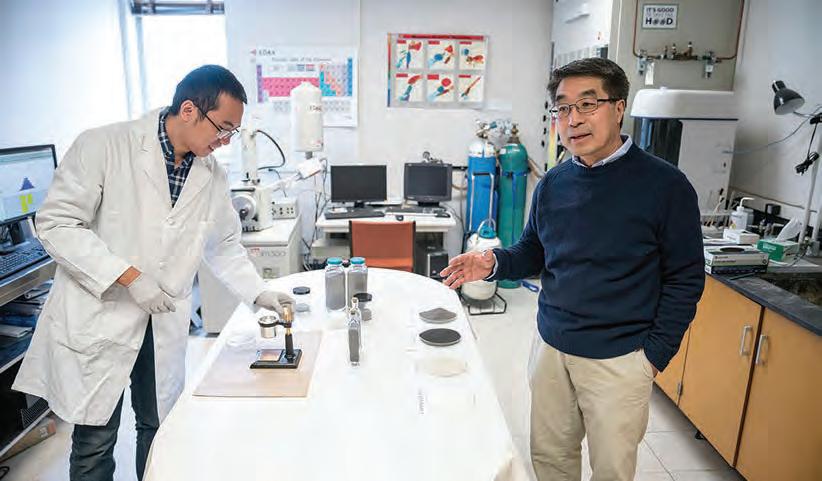
“By dramatically reducing the cost and carbon dioxide emissions of producing titanium powder, the HAMR process has the potential to fundamentally disrupt and transform the global titanium metal industry,” continues Fang.
Today, the U.S. imports almost all the “titanium sponge” it consumes each year, and it is made by an older process that is inefficient, expensive, and energy intensive. China and Russia control about 70 percent of the global market for titanium sponge,
Dirty Snow Can Accelerate Mountain Snowmelt by Weeks
As the shrinking Great Salt Lake exposes an ever-growing area of its lakebed, windblown dust becomes more dangerous for those living in Utah’s most populous region. It also makes the snowpack dirty, which is causing it to melt earlier.
In a new study, U researchers analyzed the impact of dust on snow during the 2022 season. They found that 2022
creating a significant supply chain vulnerability for a metal critical to America’s national defense.
Fang’s research, which led to the HAMR technology, promises to improve energy efficiency dramatically. The HAMR process can produce primary titanium metal from either minerals or titanium scrap. The result is that high-oxygen titanium metal is transformed into low-oxygen titanium powders that meet or exceed stringent aerospace and biomedical industry standards.
had the most dust deposition events and the highest snowpack dust concentrations of any year since observations began in 2009, and it caused the snowpack to disappear 17 days earlier than if no dust had been deposited.
“You might see 17 days and think it’s no big deal, but our current snowmelt models don’t account for dust,” says McKenzie Skiles MS’10, assistant professor of geography at the U and senior author on the paper. “Water is coming out earlier and faster than we expect it to, and we’re not prepared to use it in the most efficient way. The
landscape is also not expecting the water earlier, so it impacts watershed functionality as well as water availability downstream.”
The dust that blows into the Wasatch Mountains deposits a dark, grimy layer atop the snowpack and impacts the snow’s albedo, a term for the reflective power of a surface. The effect is like wearing a black shirt on a hot day—darker colors absorb more solar radiation and heat up faster than light colors. Dirty snow heats up and melts faster than clean snow when exposed to the same temperatures.
u Campus News
20 UNIVERSITY OF UTAH MAGAZINE
Zhigang Zak Fang (right) and Pei Sun PhD’15 describe the process to reduce commercial titanium dioxide into the final pure titanium powder.

FARM

FABLE
A unique and ‘corny’ blend of music and wordplay sprouts an unexpected Broadway sensation from the U’s campus.
 JOSHUA BLACK
to by
JOSHUA BLACK
to by
FROM

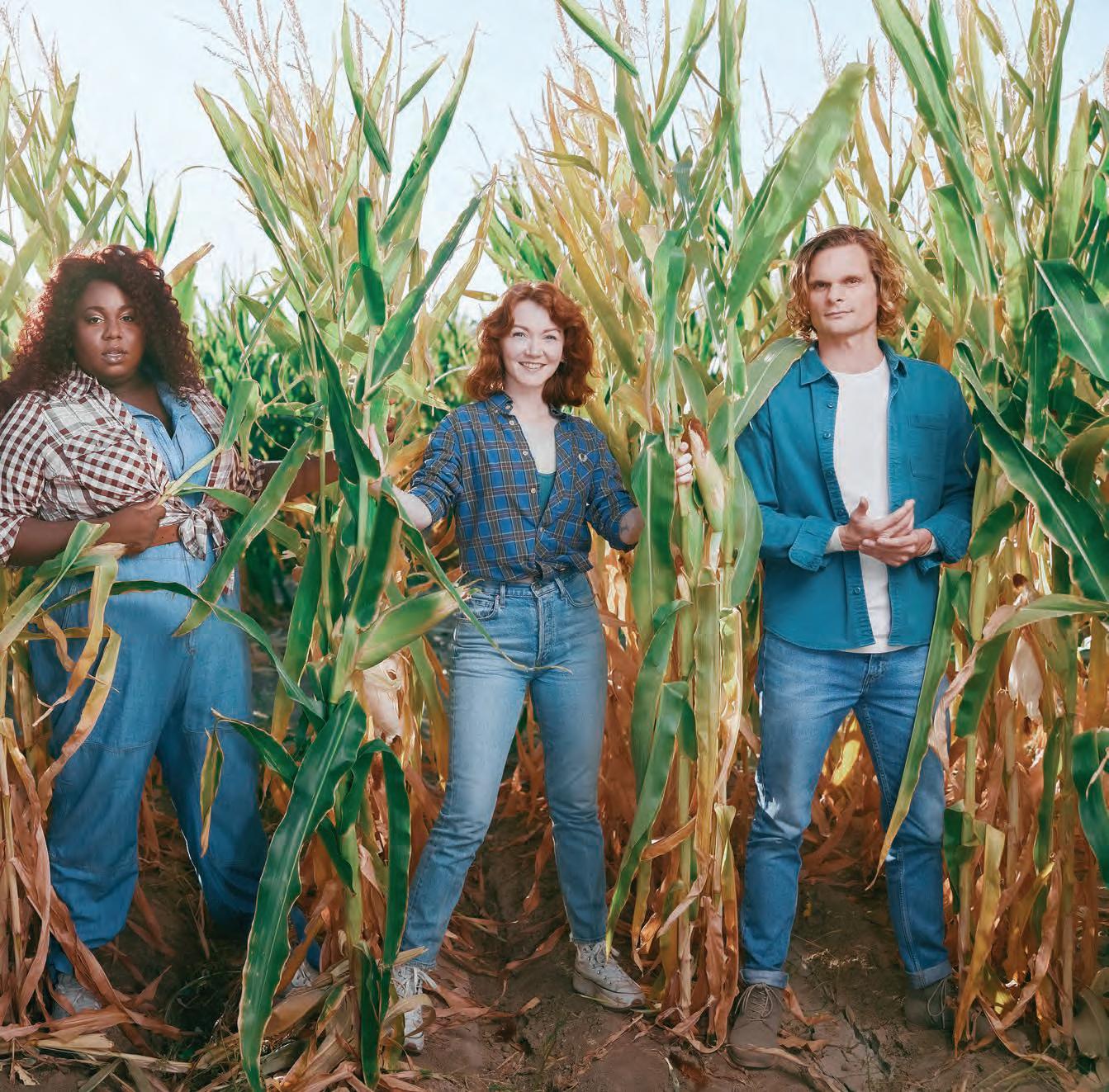

BROADWAY
A featuring HIT CORN?
You “butter” believe it! The whimsical musical Shucked—currently playing to sold-out audiences in New York—took root right here on the University of Utah campus. The production with a unique blend of country-western tunes and puns was nominated for nine Tony Awards, including best musical. So, how did a tale about corn, of all things, sprout in Utah and blossom on Broadway?
For those who have supported Pioneer Theatre Company at any point during its 61-year history, the answer should come as no surprise, says PTC Artistic Director Karen Azenberg.

“Pioneer Theatre Company has a nationally recognized reputation for producing theater,” notes Azenberg. “In addition to employing a team of gifted artisans who build each production, PTC is afforded, thanks to our relationship with the U, a rare commodity in our industry: plenty of physical space to experiment and to play.” Past examples of productions that have benefited from this formula include Les Miserables, which PTC was one of the first theaters in the nation to be granted the rights to produce. In 2016, Sting himself attended PTC’s production of his musical The Last Ship. More recently, the company has produced an intended pre-Broadway run of Cagney and world premieres including Ass by Ellen Simon and A Distinct Society by Kareem Fahmy.
PTC’s national reputation for presenting world and regional premieres on such a large scale drew the attention of Shucked producer Mike Bosner, who was familiar with the theater company through a relationship with artistic director Azenberg and her nine-time Tony Award-winning father, producer Manny Azenberg.
The experience at the U made all the difference to the production, says director Jack O’Brien. “I knew
we were testing the water severely, but if we were going to reach the widest possible audience, the fairly salty tone of our enterprise would have to find favor,” he says. “It couldn’t, in my estimation, be a better litmus test—and so it proved.”

The genesis of Shucked began with a completely different iteration of the musical—Tony Award-winner Robert Horn (Tootsie) was commissioned by The Opry Entertainment Group to write a book for a musical version of Hee-Haw in 2011. Upon meeting Grammy Award-winning songwriting team Brandy Clark and Shane McAnally, the three immediately found a camaraderie and a shared comedic sensibility. When The Opry Entertainment Group decided to leave the project, Horn, Clark, and McAnally scrapped nearly every song they had written, as well as the Hee-Haw moniker. They also eventually teamed up with three-time Tony Award-winning director O’Brien to give the show its first live audiences in Salt Lake City.
In October 2022, the Shucked cast and creative team descended upon the U cam-
pus—including Alex Newell, who would go on to win a Tony for Best Featured Actor. While simultaneously readying for a Utah opening, the Shucked team prepared for the official Broadway announcement. And Utah audiences responded enthusiastically. City Weekly ’s Scott Renshaw called the production “terrifically funny and instantly hummable.” Nicea DeGering of Good Things Utah said, “The jokes never stop!” and The Daily Utah Chronicle’s Luke Jackson implored readers to “get to Pioneer Theatre as soon as you can.… Shucked is the real deal.”
The positive media and audience response signaled they had a potential hit, says Horn. “It let us know we had a show that would make people laugh, that delivered the message we wanted, and that had a score that moved people,” he notes. “As a company, we are so grateful to the responsive and cheering audiences that helped guide this production to NYC.”
Mere days after closing at PTC in November 2022, Shucked’s Broadway run was officially announced. When the team
OPENING SPREAD: EMILIO MADRID; THIS SPREAD: MATTHEW MURPHY AND EVAN ZIMMERMAN
From the U to Broadway’s limelight, Shucked showcases the brilliance of Pioneer Theatre Company.
TRYOUT?
New theatrical works need time to be tested in front of audiences before they are ready for Broadway. So, creative teams and producers often choose a theater in a town outside of New York to fine-tune productions. Popular cities for out-of-town tryouts include Seattle (Hairspray), Boston (Moulin Rouge!), San Francisco (Wicked), Chicago (The Producers), and Washington, D.C. (West Side Story).
Shucked marks the first time that a Broadway show had a pre-Broadway run in Utah. While Shucked arrived in Salt Lake City mostly formed, the creators used the opportunity to try out new material in front of audiences.

regrouped in early 2023 for Broadway rehearsals, it was with a deeper knowledge of what did and didn’t work for Shucked, based on Salt Lake City audience reactions. Producer Bosner elaborates, “I cannot reiterate or underscore enough the importance of seeing our show, hearing our show, observing our show in front of Salt Lake City audiences for the Pioneer run. No matter what we as the creators think about the show, ultimately the audience tells you if they’re buying it or not.”
Composer Brandy Clark adds, “I feel that the biggest thing we learned creatively was that the end of Act I didn’t work, and we needed to rethink it. We also learned that our audience was younger than we thought, and that helped us market it on Broadway to that audience.”
With the show revisions and modified marketing strategies in place, Shucked opened on Broadway in April 2023. “As someone who quite literally grew up in the Broadway community, it was a full-circle moment to see PTC represented in New York in this capacity for the first time,” says Azenberg. “Robert, Shane, Brandy, Jack, and Mike have created something that has struck a chord with audiences, and I’m pleased that PTC was able to serve an important role as a developmental safe space for these artists. We can’t wait to see Shucked’s much-needed humor and radical message of unity continue to thrive on Broadway and beyond.”
For Shucked, that “beyond” includes an engagement in London’s West End in 2024. And for audiences back in Utah, what can be expected from Pioneer Theatre? The company is preparing to bring back one of its audience favorites, The Rocky Horror Show, followed by another exclusive musical for which PTC will serve a developmental role: Christmas in Connecticut. Based on the classic 1945 Warner Brothers film, the new adaptation had its world premiere in 2022 and features a score by Tony-nominated Shucked orchestrator Jason Howland. Later in the season, PTC will also be inaugurating a brand-new theater on the U campus, the Meldrum Theatre in the Einar Nielsen Fieldhouse, with the Utah premiere of The Lehman Trilogy. And with any luck, PTC audiences will get another chance someday to see a production bound for Broadway.
WHAT THE HUSK IS SHUCKED ?
Shucked, a love letter to musical theater, merges classics like Oklahoma and The Book of Mormon. Dubbed “farm to fable,” it portrays Cob County’s reliance on corn. When crops die from a mystery ailment, Maizy seeks help, encountering Gordy, a con artist “corn doctor.” With Maizy’s kin, they unveil Gordy’s scam, delivering a captivating story with a brilliant score.
ROBERT HORN BOOK

Acclaimed for his Tony Awardwinning book for the musical Tootsie, Horn has also written for countless films and television projects including Designing Women, Living Single, and many others.
BRANDY CLARK
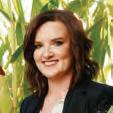
MUSIC & LYRICS
Clark is an 11-time Grammy nominee (including Best New Artist in 2015) whose new self-titled album, produced by Brandi Carlile, dropped in May 2023.
With three Grammy Awards and over 40 #1 songs, McAnally is one of the most sought-after songwriters in the country. He has worked with such luminaries as Dolly Parton, Reba McEntire, and many more.
Joshua Black is the director of Marketing & Communications at Pioneer Theatre Company and oversaw marketing for Shucked’s world premiere.
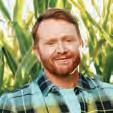
Considered a living Broadway legend, the three-time Tony Award-winning director is perhaps best known for his work on iconic shows including Hairspray and The Full Monty


GET OUTTA TOWN: WHAT IS AN OUT~ OF~TOWN
McANALLY
JACK O’BRIEN DIRECTION SHANE
MUSIC & LYRICS
New Building Opening in 2025

A GREATER FUTURE
rise to
Giving
NEW BUILDING NEW opportunities EXCITING FUTURE
The new Spencer Fox Eccles School of Medicine will be home to tomorrow’s medical leaders. Our graduates advance the standards of excellence in teaching, research, and patient care in today’s rapidly changing world of medicine.
 by Lisa Anderson
by Lisa Anderson
At the back of a sixth-grade classroom, two students are giggling while playing a game called Dino Lab. They’re building a dinosaur by combining different torsos, tails, heads, and limbs and seeing whether their creation can survive a series of challenges—beginning with the ability to stand. Pair scrawny legs with a massive body and the dinosaur will fall apart in a clatter of bones. If you build a sturdy creature, you move on to the next challenge: seeing if it has the right features to defend itself from predators. To the kids, it’s a game. But they’re learning to closely observe and analyze how an animal’s physical traits help it function and succeed in the wild.
Dino Lab is part of Research Quest, a web-based educational program created by the University of Utah’s Natural History Museum of Utah (NHMU) that aims to teach kids critical thinking. In the wilds of the digital world, where information overload is a daily threat and fake news can spread like wildfire, critical thinking is the essential skill kids need to separate fact from fiction, make evidence-based decisions, and become well-informed citizens.
AN ESSENTIAL DIGITAL-AGE SKILL
In 2016, Stanford University researchers asked 170 high schoolers to evaluate a social media post with a picture of strange-looking flowers supposedly near the site of a nuclear power plant disaster. “Not much more to say, this is what happens when flowers get nuclear birth defects,” the post said.
A quest critical thinking. for
When asked to evaluate the legitimacy of the post’s claims, less than 20 percent of respondents showed what the researchers deemed a mastery of critical thinking skills—like questioning the poster’s credentials or suggesting the image could have been Photoshopped. In the same study, more than 80 percent of middle schoolers believed that an advertisement labeled as sponsored content was actually a news story.
A 2022 Digital Media trends survey from Deloitte showed that about half of Generation Z gets its news from social media. That includes sites like TikTok, where a 2022 NewsGuard investigation found that 1 in 5 videos contained misinformation.
Spreading false claims is nothing new, but social media takes it in “potentially damaging” directions, according to the book Social Engineering by U communications professor Sean Lawson and his York University colleague Robert Gehl. “It shifts from relatively harmless, interpersonal discussions to masspersonal media—especially because Facebook and other corporate social media are built to amplify messages our contacts share with us.”
During the COVID-19 pandemic, theories and conjecture seemed to spread on the internet faster than the virus itself. The World Health Organization (WHO) calls this phenomenon an “infodemic”—an overload of information that “can intensify or lengthen outbreaks when people are unsure about what they need to do to protect their health and the health of people around them.”
Whether in politics or health care, deep thinking skills can help people make evidence-based decisions. And the usefulness of those skills extends beyond those realms into the workplace as well. The National Academies of Sciences, Engineering, and
NHMU’s trove of specimens is the backbone of real-world investigations into scientific mysteries. This emerald swallowtail butterfly was collected in 2005 in the Philippines by James R.M. Pearce. (UMNH.ent.0041981, Papilio palinurus daedalus)
28 UNIVERSITY OF UTAH MAGAZINE
IN AN AGE WHEN WE ARE BOMBARDED WITH UNFILTERED INFORMATION, A U MUSEUM IS HELPING STUDENTS LEARN COMPLEX REASONING SKILLS.
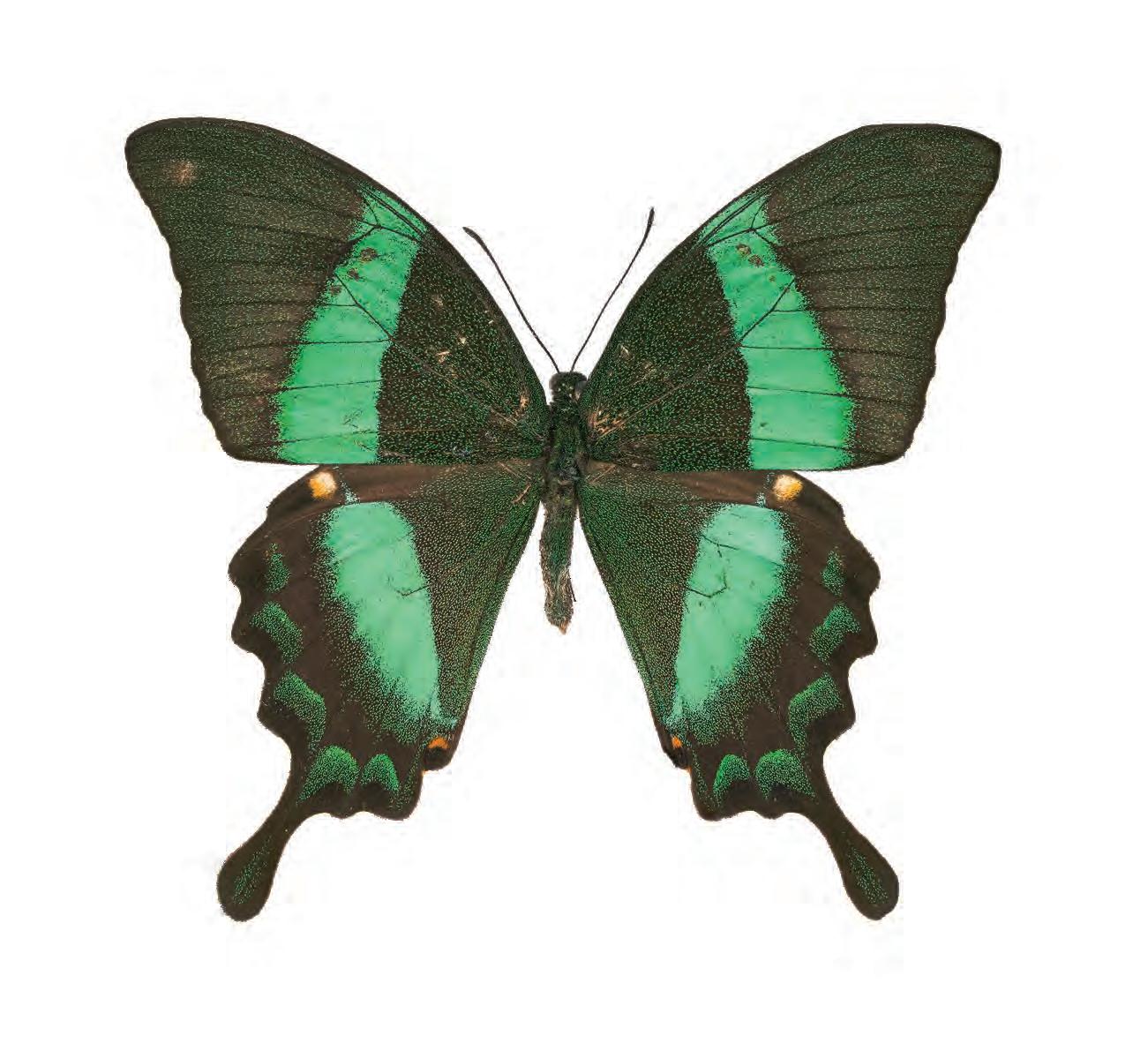
FALL 2023 29 ALL IMAGES COURTESY OF THE NATURAL HISTORY MUSEUM OF UTAH
Medicine calls critical and analytical thinking a fundamental skill workers need today. In the age of AI, say employment experts, employees with strong “human” skills like critical thinking will become more in demand.
“Going forward, people will still need to know specific bodies of knowledge to be effective in the workplace,” says Northeastern University President Joseph E. Aoun in his book Robot-Proof: Higher Education in the Age of Artificial Intelligence. “But that alone will not be enough when intelligent machines are doing much of the heavy lifting of information.”
IN SEARCH OF A NEW LEARNING TOOL
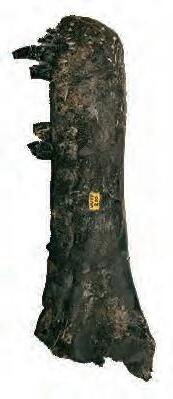
It was concern about kids encountering misinformation on social media that led to the birth of Research Quest. About a decade ago, members of the Rosenblatt family noticed younger kids were joining Facebook, Instagram, and other social platforms. “There was no real approach to teaching them to be critical about the information they were receiving,” says Toby Rosenblatt.
The Rosenblatts—longtime supporters of the U who are dedicated to the field of education—turned to the U to start discussions about helping develop and fund a program that would teach kids critical thinking skills. Toby’s niece, Jody Rosenblatt, suggested they approach the Natural History Museum of Utah.
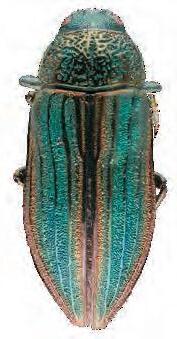


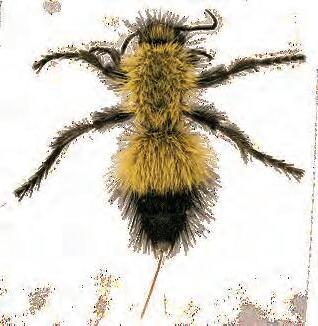
“Initially, we thought that natural history didn’t sound like a very strong connection,” says Toby. “But she persuaded us to talk to them.”
Jody knew the impact an NHMU educational program could have on young minds. She had participated in the museum’s school programs when she was growing up. As the state’s official natural history museum, part of NHMU’s mission is to promote science education and serve as a resource for K-12 teachers throughout Utah. NHMU hosts field trips, of course, but it also brings the museum to the classroom through initiatives like Museum-on-the-Move—a traveling collection of artifacts. NHMU’s programs made such an impact on Jody Rosenblatt that she fell in love with science. Today, she’s a cell biologist.
After meeting with the Rosenblatts, leaders at NHMU were on board with the idea. They put together a team charged with creating a program that would be accessible to a wide number of teachers and students—in Utah and beyond—and would have measurable impact. The Joseph and Evelyn Rosenblatt Charitable Fund would support research and development of the program.
The team—which included university research scientists, expert teachers, and curriculum developers, along with professionals from the worlds of digital learning, museums, and game design—began with the question, What is critical thinking?
“There isn’t a ubiquitous definition,” says Madlyn Larson, associate director of education initiatives at NHMU and project director for the development of Research Quest. “So we defined discrete skills we wanted to effect: how to make strong observations and inferences, how to engage in analysis, and how to develop arguments based on evidence.”
That requires going beyond the shallow learning of regurgitating facts, says Kirsten Butcher, a professor of educational psychology at the U. “What works best is if we design investigation contexts where learners are challenged to integrate new information with prior knowledge, generate new ideas, and be critical of their assumptions,” she says.

As director of the U’s Instructional Design and Educational Technology Program, Butcher was brought onto the team to help create an en-
From pottery to fossils, NHMU’s vast collections fuel Research Quest, teaching middle schoolers critical thinking. For info on these images, visit magazine. utah.edu/ criticalthinking.
30 UNIVERSITY OF UTAH MAGAZINE
gaging web-based program that resulted in meaningful and measurable increases in student knowledge. The team put together prototypes that had students investigating scientific mysteries, incorporating lots of multimedia and interactive games—like Dino Lab—developed by designers in the U’s Division of Games (formerly the Entertainment Arts & Engineering program). Data from preand post-assessments showed that the students who used the investigations scored significantly better than their control group peers on reasoning with evidence. The successful program was ready to be launched far and wide.
INVESTIGATION OVER MEMORIZATION

Back when she went to school, says Rachael Coleman, science was all about memorization. “There were certain students who wanted to be chemists because they loved memorizing the periodic table,” says Coleman, a science specialist at Jordan School District. “But when you get to be a chemist, you realize that’s not really what you’re doing.”
Coleman and her district colleague Lynn Gutzwiller say they focus on teaching kids critical thinking because, simply put, that’s what scientists do. And that’s why they find Research Quest so valuable.
“There is a deep, dark void of online virtual investigations that are free, high quality, and help students access critical thinking and deeper learning skills,” says Gutzwiller. Research Quest strikes the right balance of engaging and educational, she asserts. It aligns with rigorous Next Generation Science Standards, “but it isn’t so collegiate that it’s out of the realm of understanding for a sixth grader.”
At the heart of every Research Quest module is a real-world scientific mystery. One investigation begins with a video of an NHMU educator in a lodgepole pine forest. Dry branches crack under her feet as she walks through a stand of bare gray trunks. “What is killing all these trees?” she asks. “Something strange is going on.” In another investigation, a paleontologist stands next to fossils discovered at Cleveland-Lloyd Dinosaur Quarry. “I’d
think critically. But they’re learning
like you to develop a hypothesis to answer the question, What dinosaur did these bones come from?” she says.

Each investigation involves a set of virtual activities where students explore digitized museum collections and data to gather their own evidence for the research question at hand. “We give kids the opportunity to collect their own data so they understand where data comes from,” says Larson.
The Cleveland-Lloyd module, for example, has kids studying 3D fossils on the screen, rotating them this way and that for a detailed view. After writing down their observations, students watch the paleontologist explain her own findings.

“It shows students that this is the depth of answer we’re looking for,” Coleman notes. Instead of just saying, “It looks like a claw,” they’re encouraged to ask deeper questions—what, exactly, makes it look like a claw?

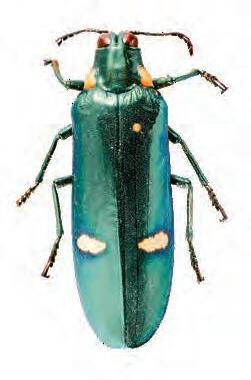
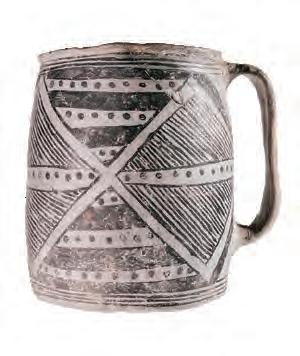
FALL 2023 31
To kids, it’s a game. to

32 UNIVERSITY OF UTAH MAGAZINE
Students study a digitized version of this Allosaurus femur in the “What dinosaur did these bones come from?” investigation.
(
“What’s Killing These Trees?” was the first investigation Kris Larsh and his students tried out. “The kids were like, hey, this is really neat,” says Larsh, who teaches middle school science at Stonewall Public Schools in Stonewall, Oklahoma. Larsh found Research Quest while searching Google for a free science resource that wasn’t just another worksheet. The more investigations his students tried, the more Larsh noticed how engrossed they were. “I was trying to get them off their Chromebooks, but they were still playing around with the triceratops.”
What’s more, he says, the kids began to think like scientists.
“I could sit all day and break down the scientific method. But it wasn’t setting in,” says Larsh. “But when they listened to the scientists talk in Research Quest, I knew they were starting to really home in on what the scientific method was.” Their science fair projects became about more than just throwing Mentos into a bottle of Coke and seeing it foam up. “The kids started saying, ‘What if I change the variables?’ That’s when I knew magic had happened.”
Extensive data from the Research Quest team’s studies proves its effectiveness. The team employs several methods, such as listening to student conversations as they work on the investigations.
“That allows us to understand the depth of the processes they’re using to gather evidence and make decisions,” says Butcher. The team uses their observations to keep improving the program, she explains. “One thing we have found as we’ve developed our approach over time is that students are really digging in deeply. They’re using evidence in much more principled and strategic ways than they did before, and they’re realizing one piece of evidence is never sufficient. You need a pattern of evidence.”
“In the earlier iterations, we saw kids latching onto an idea early,” Larson adds. “That ran counter to our desire to create flexible thinking.” After tweaking the modules to increase time spent on data collection, she notes, “students were able to argue with evidence more effectively and stay open to new information as they progressed.”
Gutzwiller says students who want yes or no answers sometimes get frustrated at first, but they learn that it’s okay to take risks as they learn. “They realize, ‘I don’t have to have the ‘right’ answer as long as I can support my answer with evidence,’ ” she says. “I think that’s really powerful. That might be the best thing they take away from Research Quest.”
AMPLIFYING THE IMPACT
Today, Research Quest has been used by more than 1,300 teachers whose students have logged into the investigations more than 400,000 times. The proven effectiveness has earned the program recognition—along with funding from the Utah State Legislature’s Informal Science Education Enhancement program and a $1.3 million grant from the National Science Foundation. In addition, Research Quest receives ongoing philanthropic support from the Joseph and Evelyn Rosenblatt Charitable Fund and the I.J. and Jeanné Wagner Charitable Foundation.
“I think it’s beneficial for NHMU to be able to count on longterm funding for this innovative initiative,” says Toby Rosenblatt.
Larson says an unplanned secondary goal has emerged: to share their framework for how to create an effective digital educational program that leverages natural history collections.

“I’m always mindful that as part of an academic community, we have an obligation to contribute to the creation and dissemination of new knowledge,” she notes. “This, for us, is one important way we can impact critical thinking in young people—by sharing what we’ve learned with others interested in doing similar work.”
RESEARCH QUEST
UMNH.VP.7886, Allosaurus fragilis)
Lisa Anderson is associate editor of Utah Magazine.
Does this bug look yummy? To some predators it might. With the help of NHMU entomologists—and some colorful science-based comics—students use museum collections to compare specimens as they look for evidence that may reveal physical cues that drive prey choice.
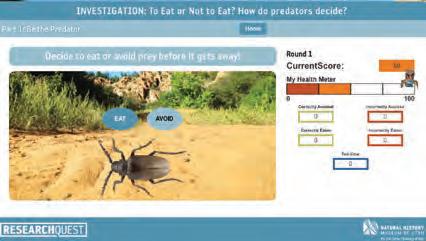

FALL 2023 33
Welcome to Dino Lab! In this simulator, students can build their very own dinosaur models. But watch out, these self-constructed beasts must be able to survive four unique challenges. Kids learn how to closely consider the relationship between physical structure and the tasks that must be performed to find success.
Ready, set, rotten! Students in this Epic Bioscience investigation use museum collections to learn about ecosystems and the organisms that live in them. Here, they see how fungi contribute to decomposition and then analyze the implications of their findings on matter cycling in different settings.

34 UNIVERSITY OF UTAH MAGAZINE

FALL 2023 35
are hardwired for curiosity, a trait that has driven exploration for millennia. This innate wanderlust has led to remarkable journeys, from Pacific Islanders traversing the ocean to early humans leaving Africa some 70,000 years ago. “We want to push out. We need to explore,” says Rick Batchelor, associate director of Learning Abroad. As the U expands global opportunities for students post-COVID, the value of worldwide studies comes into greater focus.
Students who study abroad are more likely to graduate, get accepted to graduate school, secure employment post-graduation, and report higher satisfaction with their college career, says Batchelor. Beyond these tangible benefits, studying abroad fosters maturity and a well-rounded education.
Andee Mazurowski BA’22 exemplifies these benefits. “Before my study abroad in Alicante, Spain, I’d never left the country,” says the former Spanish major, now preparing to teach English in Spain before starting a master’s program in Barcelona. “It helped me see what I wanted to do after graduation and gave me the experience to pursue it.”
The world is increasingly interconnected, says U President Taylor Randall HBA’90. “We want to open doors for students to experience other places, cultures, and environments. As a global university, the U fulfills that commitment to our students when we help them have an international experience.”
And with over 500 programs in 50+ countries, there is something for everyone. Students should start planning early, considering course arrangements and financial aid. The Learning Abroad team is ready to assist at every step—including increasing scholarship opportunities and working to ensure that all who want to participate have the option, says Batchelor.
Join us as we explore some selections and perhaps ignite your wanderlust. It’s time for you to choose your own adventure.
Nº 1 U ASIA CAMPUS
In less than a decade, the U Asia Campus in Incheon, South Korea, has grown from 14 to over 500 students, with nearly 100 staff and faculty. It serves as a global launchpad for U students and is completely integrated into the University of Utah experience. “Everything for students is the same in terms of tuition, financial aid, and registration,” says Randy McCrillis, the executive director of U Asia Campus. “Courses are in English, faculty and staff are U employees, and the credits are identical.” And housing costs around $1,200 per semester, he adds.
Students can spend from a single semester to three years at the U Asia Campus, with nine majors available for degree completion. It also serves as a hub for international students, who can split their time between the Asia and Salt Lake City campuses.
McCrillis notes unique opportunities such as smaller classes and a more intimate experience. “Professors know your name and are invested in your success,” he says.
With the nearby city of Seoul to explore and countries like Japan within easy reach, students can broaden their horizons. “Many say their time here was the highlight of their college experience,” says McCrillis. Biology major Ruth-Ann King agrees. “It was such a unique opportunity to step out of my comfort zone and see how others live, have adventures, and meet fascinating people. There’s nothing quite like it.”
Ready to go to Korea? Choose between A) Global LEAP program for first-year students or B) the U’s gaming program.
A) First-Year Learning Abroad in Korea
When King’s fellow students went through newstudent orientation materials online, they breezed right through. But King was more meticulous— and how grateful she was after discovering a program that would have her on the U Asia Campus her second semester.
“It was my first time out of the country,” says King. “It changed my life.” She was one of the 30 or so first-year students who participate each year in Global LEAP, one of many LEAP learning community programs offered to help first-year U students create connections and community with other incoming students.
Regardless of major, Global LEAP students take a humanities and diversity course their first semester that touches on aspects of Korean and Korean-American culture, history, and literature, taught at the Salt Lake City campus by Becky Larsen, associate professor (lecturer) in Undergraduate Studies. The students then take a course together in Korea, along with other classes—often general education. And that camaraderie builds new and lasting connections for them, says Larsen. “There is a remarkable change that happens in these students,” she notes. “It’s a new level of maturity, and often of focus.”
While it was a little daunting for King at first, before long she was taking the train into Seoul on the weekend for karaoke, café culture, and some outstanding sightseeing. “I would just say to others thinking of participating—do it!” remarks King. “You won’t regret it.”
Ready for a new adventure? Delve into Adventure Opportunity 2: Faculty-Led.
B) The Utah Division of Games
The latest addition to the assortment of possible majors at the U Asia Campus, this College of Engineering division (formerly called the Enter-
tainment Arts & Engineering program) gives students the chance to earn a degree in game education, research, and design. “It’s the same top-five division in the world as the Salt Lake campus, just taught in Korea,” says McCrillis. And perhaps it’s no wonder there was demand for the degree—more people per capita play video games in Korea than anywhere else in the world. The U is already developing relationships with gaming giants headquartered in the region, including Blizzard and Riot Games, to open internships, student game reviews, and other possibilities.
If you’re ready to explore more opportunities, make your way to Adventure Opportunity 2.
Nº 2 FACULTY LED
Get ready to embark on a riveting journey with U faculty leading the way. These short-term programs are woven into your degree requirements and often combine in-country experiential learning with classwork. Options abound, including areas in humanities, film and media arts, honors, behavioral science, and more.
Now, it’s time for you to decide if you want to A) go to Ghana with public health or B) make your way to the Alps for a wilderness medicine course.
A) Ghana Public Health
This immersive program has offered students an opportunity to engage in hands-on, community-based research alongside Ghanaian health professionals for nearly two decades. “Global health is the work that happens in the communities, the education that happens in the schools, the economic development that happens in the businesses, and the research to support those initiatives,” says Scott Benson, program director and associate professor in the Division of Public Health. The program, which includes a three-week stay in Ghana and an optional week in Paris, is open to students from diverse fields, reflecting the multifaceted nature of public health. From research on the efficacy of malaria-testing kits to a water sanitation project, this is more than a class. “It’s an invitation to make a tangible difference in the world by partnering with the local communities in Ghana,” adds Benson.
Get ready for more hands-on experience with Adventure Opportunity No. 3: Internships.
B) Wilderness Medicine
Some classes are taught in labs, others in lecture halls—but one U Wilderness Medicine course
(Previous page) The wilderness medicine course taught in Chamonix-Mt. Blanc, France, attracts instructors from around the world. (Right) Students expand horizons in programs like this in Alicante, Spain.
36 UNIVERSITY OF UTAH MAGAZINE


unfolds in the French Alps. For nearly 15 years, students have journeyed to Chamonix-Mt. Blanc, France, for a comprehensive curriculum covering topics from altitude sickness to backpacking medicine. The course is open to undergraduate, graduate, and medical students, says program director Richard Ingebretsen.
“The instruction is unbelievably good,” says Ingebretsen. “We’ve got big power hitters in the field coming from all over the world at their own expense to teach.” Ingebretsen is helping the U become a magnet for wilderness medicine, and his podcast Wild Med U recently surpassed 100,000 downloads.
The program’s location in Chamonix-Mt. Blanc provides an outstanding real-world environment for wilderness medicine. Students learn about glaciers and rock formations and even picnic on glacial moraines. “The overall experience is transformative,” he notes. “Two weeks and they’re different people. The opportunity to learn abroad is invaluable.”
Prepare for an immersive experience with our third Adventure Opportunity: Internships.
Nº 3 INTERNSHIPS
Venturing into the global scene isn’t just about cultural immersion—it’s an opportunity to earn college credit and boost your résumé. The question is, where will your academic adventure take you? There are options to work with nonprofits, foreign governments, private businesses, the United Nations, and so much more.
Do you want to A) help shape global policy with the Hinckley Institute, or B) master international business with Eccles Global?
A) Hinckley Global
Imagine being a student and finding yourself at the heart of the United Nations’ fight against human trafficking in the Association of Southeast Asian Nations region. This isn’t a hypothetical for Bon Lee, a student working toward her MPA at the U. “When I applied for an internship, I just figured I’d go for parliament or something,” says Lee. “But I met with Jean Oh [director of Hinckley Global Internships], and she really got to know me, my background, and what I was interested in.” Oh encouraged Lee to apply for the internship, and she won out over competition from around the country.
Each student who is interested in an internship gets the same treatment, says Oh. “We typically place around 70 students from various majors and backgrounds each year all around the world,”
she notes. “This isn’t a cookie-cutter global experience. We work with governments, NGOs, and myriad other organizations to give students an impactful experience.” The internships are a launching point for many who pursue degrees in international fields. “But that global perspective and dedication is just as valuable here in Utah,” says Oh. “You get to build your résumé, broaden your horizons with a global experience, and earn college credit, all with scholarship dollars from the university. What’s not to love about that?”
Get ready to explore themed adventures through affiliate and exchange programs at numerous universities worldwide.
B) Eccles Global
Ethan Hoggan BA’21 is currently teaching English in a remote town in Japan. And not long ago, he was analyzing data for a retail company in Chile. How did this seemingly global citizen jet around the world? Thanks, in part, to the Eccles Global Internship. “I was an international studies major in the College of Humanities, and the internship in Chile changed my life,” he says. “I was immersed in a completely different culture and business environment. It was an amazing opportunity to learn about business in a global context—and I realized this is what I wanted to do.”
The internship program, which pairs students with startups, nonprofits, and larger organizations around the world, is relatively new and just one of the many options offered by Eccles Global Learning Abroad in the David Eccles School of Business. “We’re here to provide students with résumé-building experiences and classroom credit,” says Cesar Sanchez, associate director of Eccles Global. “Beyond that, we’re here to unfurl students’ horizons, help them see the vast and vibrant tapestry of the world, and imbue them with global empathy.”
Eccles Global offers various international experiences, from short-term trips to semester-long study abroad opportunities where you’ll earn nearly a full minor. “And it’s not just for business students,” stresses Sanchez. “There are opportunities for everyone.”
For the final stop on your adventure, learn more about themed adventures with affiliate and exchange programs.
MORE: AFFILIATE
Andee Mazurowski—the student who studied abroad in Alicante, Spain—wanted a global experience that would allow for some independence. And after learning about the options, she chose an affiliate program from a third party that would allow her to live with a local family in Spain and study with other students from around the U.S.
These affiliate programs are typically structured around a topic, such as science and engineering or architecture. “It allowed me to immerse myself in the local culture and language in a way that wouldn’t have been possible otherwise,” she notes. There are even virtual options for those who cannot travel. “I still talk to my host mom two or three times a week, which shows the deep connections I was able to make.”
MORE: EXCHANGE
The U has direct partnerships with 34 different universities around the world for an opportunity to complete coursework in an immersive environment with local students. As with affiliate programs, it’s likely you’ll be the only U student involved. Several of the schools are ranked in the top 100 universities in the world, including the University of Sydney, Hong Kong University of Science and Technology, and Tsinghua University. Bonus—you pay U resident tuition rates while studying at any exchange program.
Seth Bracken is editor of Utah Magazine.
BY THE
50+
COUNTRIES WHERE STUDENTS CAN STUDY ABROAD
1,000+ OPPORTUNITIES FOR STUDENTS
500+ STUDENTS PARTICIPATE ANNUALLY
$250K SCHOLARSHIP DOLLARS AWARDED ANNUALLY
FALL 2023 39
Internships like the one offered in Santiago, Chile (depicted here), are just some of the many offerings from Eccles Global Learning Abroad in the David Eccles School of Business.
of Fandom
an
In the early ’70s, a tradition started to take root as three Utah couples began gathering before each home U football game, delighting in the chance to revel in the company of friends, all while cheering on a less-than-stellar Utes squad.
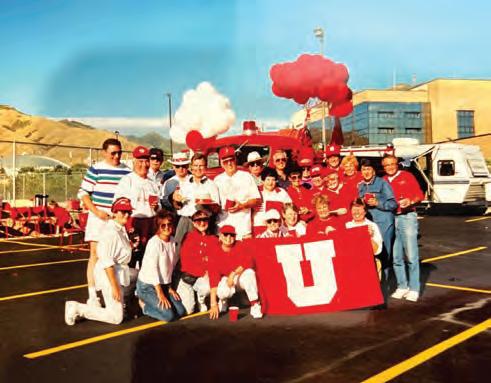
“We started tailgating because we listened to [long-time radio disc jockey] Tom Barberi,” says Dave McDowell BS’60. “He would encourage everyone to go to the games and tailgate before—so we did.”
What began as a leisurely way to spend an afternoon became much more, says McDowell’s wife, Nickie. This was a lifestyle, a commitment to the joys of camaraderie and the thrill of the game. And in those early days, the cost of admission was nominal: game tickets were just a couple of dollars at the local grocery stores, and a tailgate spot was yours for a buck.
“There were no reserved spaces, no assigned parking, no pretenses,” notes Nickie McDowell. And after you entered the uncrowded stadium, you watched the game from wherever you could find a spot.
up—from South Dakota back to Utah. It took three days.
“It didn’t have windshield wipers, and it started to rain,” says Skillings. “We could only find one replacement, so there we were, driving down the road going the top speed of 40 miles per hour in the pouring rain with a single wiper.”
The Ute Fire Engine Group was launched soon after it arrived in Utah. The official name is now the Fire Engine Historic Preservation Association. The group’s children began tailgating with the founding couples, then grandchildren started participating. Today, an occasional great grandbaby will make an appearance. It is indeed four generations of friendship, fun, and football—fortunately with a more successful athletic program, says Dave McDowell.
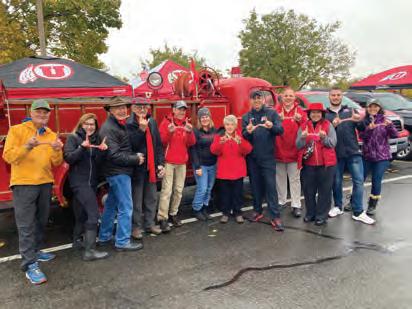
.edu/firetruck
In the mid-’80s, one of the original group of tailgaters, Marlene Skillings, saw that an antique fire truck was on the auction block in Armour, South Dakota. After consulting with the group, by then expanded to nine couples, she wrote a check for $825. She and her husband, Jim, drove the truck—which had bad brakes, balding tires, and a front hood that kept flying

The crimson-and-chrome truck is now a star in the pregame lot. It’s even been invited to multiple parades and been featured on ESPN College GameDay. Fans flock to capture a moment with the beloved truck, and kids love setting off the siren, while others bask in its thrilling wail as the truck makes its grand entrance, announcing the start of another unforgettable evening of solidarity and, hopefully, victory.
Special thanks to Angie Matinkhah MAR’87, who has been a member of the tailgating group since 2016, for her assistance with this article.
40 UNIVERSITY OF UTAH MAGAZINE
From
antiques auction to ESPN fame, this group of tailgaters has kept the flames of U football fandom burning bright
Web Extra See more images of the fire engine
and tailgaters from across the years at magazine.utah
Selling Like Hotcakes
Kodiak Cakes may be a multimillion-dollar company today, but its beginnings couldn’t be humbler. Joel Clark BS’99 (pictured here) and his brother, Jon Clark BS’92 MBA’98, were just kids when they first sold their mom’s whole-wheat pancake mix, packaging it in brown paper lunch sacks and toting it around the neighborhood in a little red wagon.
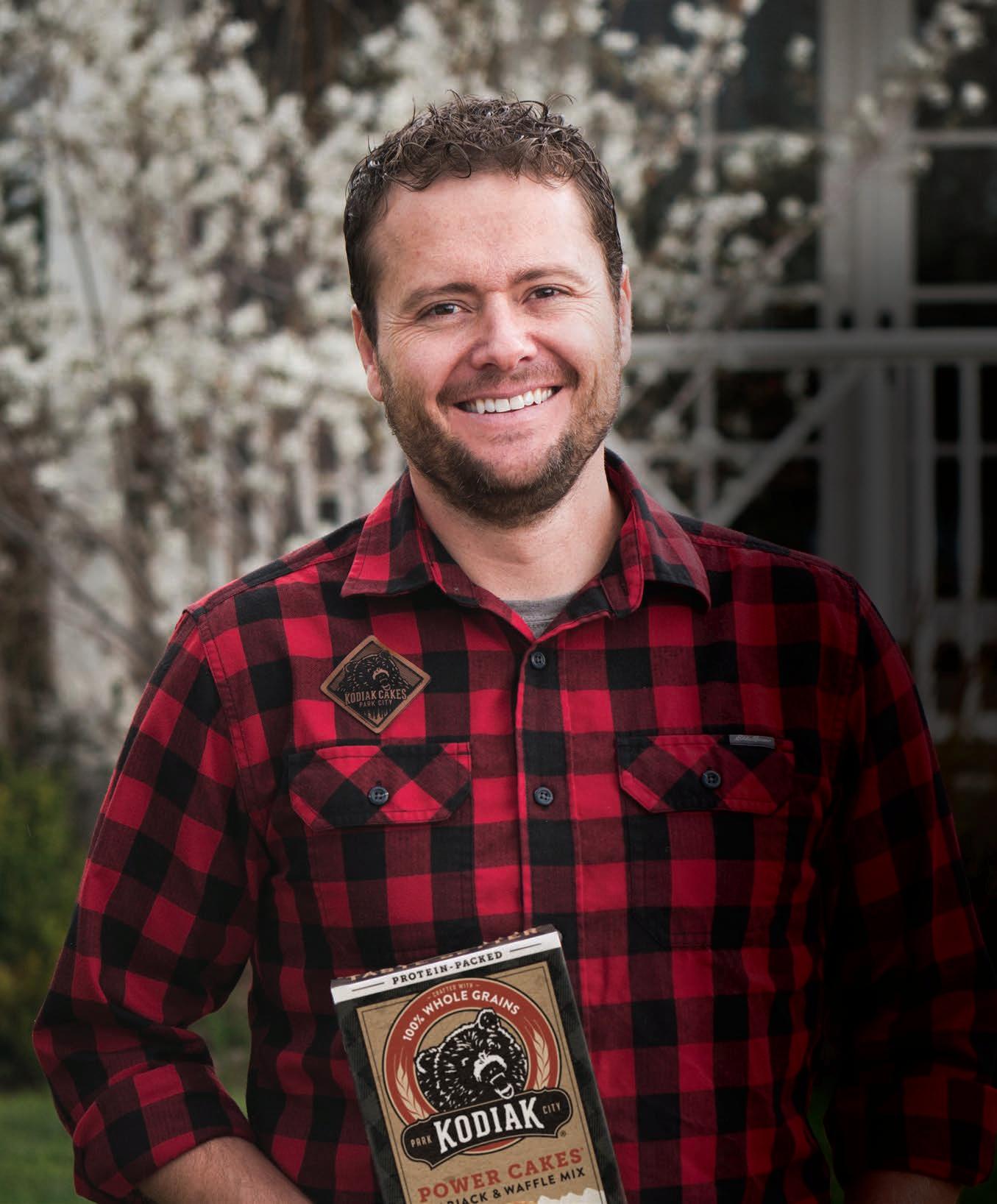
Years later, Jon resurrected the idea into a legitimate business. He dubbed the company Kodiak Cakes, evoking an image of hearty, whole-grain flapjacks on the Alaskan frontier. Joel, still a student at the U, joined in, then took over when Jon offered him the business a few years later.
“Here I was, 23 years old with another year to go at the U,” says Joel. “I’d always dreamed of having my own business. But I had no clue how hard it was going to be.”
As Joel finished school, got a full-time day job, and earned an MBA at Oxford, he kept Kodiak Cakes going as a side hustle. “It was incredibly tough just keeping it alive,” Joel says. He leveraged everything he had and considered selling more than once. But his passion for the business kept him going. “I loved the idea of selling a product based on my mom’s recipe,” he says.
Eventually Joel quit his day job. A few years later, he hired his first full-time employee— Cameron Smith, whom he’d found after listing the job through the U’s Career Services. Cameron got them on Shark Tank , which didn’t result in a deal but did result in national exposure. Then, after Joel added protein powder to his pancakes one morning on a whim, the idea for Power Cakes was born. They launched the product at the height of the protein craze, and “it took off immediately,” Joel says.
Kodiak Cakes is now the second-best-selling pancake mix, frozen waffle, and oatmeal in the country, with a presence in 26,000 grocery stores and chain retailers.
Joel’s advice to would-be entrepreneurs: follow your passion. “Passion can help you make illogical decisions. And sometimes you have to go against logic as an entrepreneur,” he says. “You’re going to face big obstacles. You have to make sure the passion is so deep that it drives you to keep going.”
PHOTO BY SAM FEATHERSTONE FALL 2023 41
Computer Science Greats


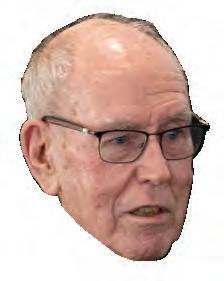
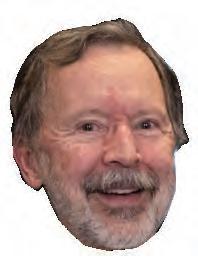

The U’s computer science department was still brand new when its students and faculty began transforming the world of computing. Their groundbreaking creations in interactive computing, 3D objects, and animation—decades before Toy Story ignited a revolution that would spawn computer simulations, medical imaging, CGI movies, video games, virtual reality, and much more. In March 2023, these computer science pioneers reunited on the U campus to celebrate the 50th anniversary of the U’s Kahlert School of Computing. They talked about the culture of the department, their trailblazing work, and how innovation happens.
“The work I was doing was the least of what was going on at Utah… I thought of this environment as a bountiful field of grain just giving rise to one idea after another.”
“It’s harder to forget what you’re taught than to learn new stuff. And that’s the value of students. They don’t know what can’t be done, so they just go ahead and do it.”
“There was a paper that had just come out in 1968 written by one Ivan Sutherland. The title was ‘A head-mounted three-dimensional display.’ It blew my mind…. Here was a three-dimensional world in the room with you. [From then on] I didn’t want to do anything else.”
42 UNIVERSITY OF UTAH MAGAZINE
Web Extra John Warnock passed away at 82 on Aug. 21. Read a full profile about his life and impact at magazine.utah.edu/warnock
Ed Catmull PhD’74,
co-founder of Pixar, on the critical reception of Toy Story
“What made me proud was that almost all the reviews only had one or two lines saying it was done on a computer. The focus wasn’t on the technology—it was on the story. That was what it meant to have arrived.”
“I thought, since the world communicates with documents, we need to design a program that will print any document you can think of, in any typeface, orientation, or resolution, and that would bring all of publishing into the digital world.”
John Warnock PhD’69,
co-founder of Adobe, on developing the PDF
Henry Fuchs PhD’75, innovator in 3D medical imaging and virtual environments, on the world’s first virtual reality headset
Ivan Sutherland, former U professor and inventor of the breakthrough interactive graphics program Sketchpad, on researching the unknown
Alan Kay PhD’69, who helped create the personal computer and laptops, on the U’s computer science department
It's back! When you become a U plate holder, you can now choose from two designs: the block U design or the newly reintroduced interlocking U design. With a $40 a year contribution, you can help support scholarships for deserving U students. Order today at utahplate.com

Helping Build Up a Nation
Emerald studs on a sapphire blue silk fabric. That’s how Landisang Kotaro BS’09 describes her home country of Palau, an archipelago made up of over 500 islands, where she is currently the youngest and first-ever female chief of staff for the president.
When it came time for her college education, Kotaro found herself thousands of miles away from this Pacific paradise, following her mother and sister to the University of Utah. Her mother was doing research with the U’s Department of Psychology, and her older sister, also interested in psychology, decided to attend. It was easier for Kotaro’s parents to support the sisters if they were both in the same place, so she enrolled in the spring of 2005.
Kotaro recalls her time at the U fondly, despite the initial climate jolt. “I started in the dead of winter, so going from a tropical island to winter overnight was the biggest shock I had experienced,” she says. But she found warmth in how welcoming the community was and appreciated that people took the time to get to know her and her sister.
After graduation, she went back to Palau. “That was always the plan,” says Kotaro. Her parents, and

particularly her father, had instilled in her the idea that she should come back and contribute to her country post-graduation. After returning home, she spent a year working for the Senate of Palau. Next came grad school in Taiwan, working in the House of Delegates, and multiple fellowships (including a UN fellowship for oceans-related issues).
In 2020, Kotaro was studying for the LSAT when Palau’s newly elected President Surangel Whipps, Jr., approached her to help with his transition committee. Kotaro agreed, but after the transition, she was asked a more difficult question: did she want to be his chief of staff?
“I’m young, female, and, as cliché as it sounds, in a man’s world,” says Kotaro. But she couldn’t pass up such a golden opportunity to help people. So she agreed. “It’s been a roller-coaster ride,” she says. “It’s the steepest learning curve I’ve ever had to face in my whole life.”
Kotaro thinks she may one day run for office, but her primary focus for the near future is continuing to help and empower people while contributing to Palau’s nation-building.
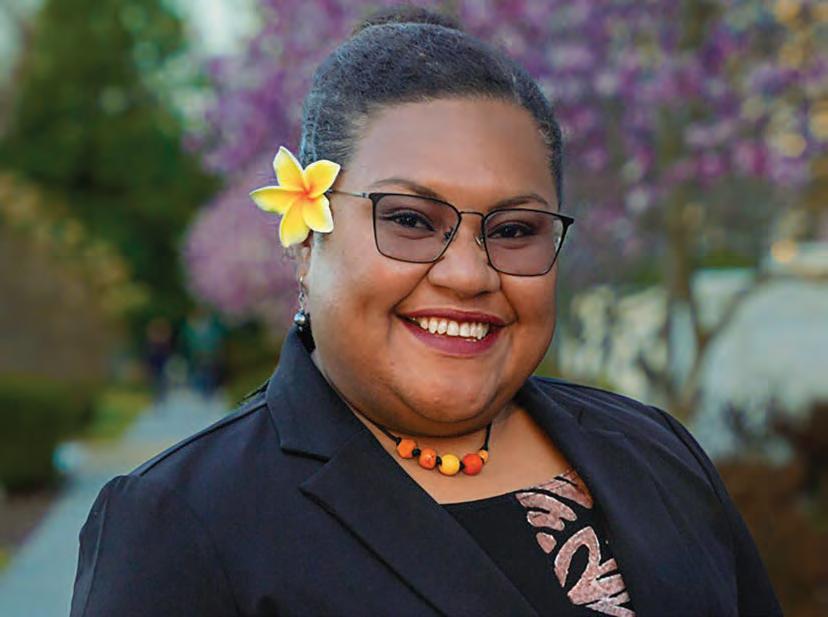 ELENA GARDNER
ELENA GARDNER
If you’re heading to Seattle to watch the Utah vs. Washington game on Nov. 11, join U Alumni for an experience that you’re sure to remember—Sailgating! Before the game, take a cruise around Lake Washington and get dropped off at the stadium. You’ll get back on the boat after the game and head back to the port. Don’t miss this exciting new experience! Check availability at alumni.utah.edu
Link up with more of your U family across the globe by joining the Forever Utah Alumni Network. Inspire the next generation of U alumni leaders by joining this online network, created to foster new and renewed alumni relationships and facilitate mentoring for students and new grads. Sign up at forever.utah.edu

Alumni News u FALL 2023 43 ALUMNI NEWS ROUNDUP
An alum becomes the youngest and first-ever woman to serve as presidential chief of staff for Palau
Class Notes ’70s
Alexander E. MacDonald PhD’75, a pioneer in computer weather prediction also known internationally for his research into addressing climate change, received an honorary doctorate in humane letters from Montana State University, where he earned his bachelor’s degree before joining the Air Force. There, he realized the potential for earlier and refined weather forecasting to reduce suffering and death worldwide through the emerging technologies of satellites and computer modeling. After earning his doctorate in meteorology, he joined the National Oceanic and Atmospheric Administration, where he spent the bulk of his career, making important original contributions to weather forecasting, energy systems, and international science education.
SPOTLIGHT
’80s
Mark H. Paul BA’87 is the new executive director of the University of Utah Health Center for Medical Innovation. A fourth-generation U grad, Paul was previously president of the neurovascular division at Stryker Neurovascular based in Fremont, California. He is an industry pioneer in the development of microtools used in brain surgery.
Michael Kirklen BS’88 established the Michael Kirklen Scholarship, which is offered to a recipient of the annual Martin Luther King Jr. Youth Leadership Awards, a U co-sponsored honor recognizing outstanding middle and high school students statewide for actively contributing to their communities. Kirklen is CEO of Blooming Property Management & Lodging and Second Home Mike.
’90s
SPOTLIGHT

The art of David Meikle BFA’94 MFA’06 features prominently in the new Wes Anderson film Asteroid City. Meikle created the painting for the movie’s poster and seven other original works of art used in the film, helping bring its aesthetic to life. Meikle is well-respected for his captivating paintings of the West, which are now held in many private, corporate, and permanent collections. His work for the movie was highlighted in a large feature in the art magazine Western Art Collector. His artwork has previously made an onscreen appearance in the TV sitcom The Last Man on Earth

Manny Hendrix BS’94 MS’04 (Athletics Department), Sumiko Anderson MSW’06 (College of Social Work), and Bethany Hardwig MLS’22 (Office of Alumni Relations) were honored during the U’s 2023 Black Faculty + Staff Awards, which recognize those who holistically enrich, support, and advocate for Black faculty, staff, trainees, and students through their work on campus and in the community. James Jackson III BS’02 was also honored at the event with the Ronald G. Coleman Black Alumni Award. ’00s
Jason Curry BS’00 is the director of Utah’s Division of Outdoor Recreation. His role includes expanding and improving the state’s recreational opportunities. Curry was previously a deputy director with the Division of Forestry, Fire and State Lands.

Danny Chi BA’01, senior director of communications and West Coast publicity for ESPN, was honored with the University of Utah’s College of Human-

Timothy Horton, Jr. BS’18 is one of the first African American designers to collaborate with a professional hockey team, with his GRIZZ GANG collection of varsity jackets, hoodies, and more created for the Utah Grizzlies in celebration of Black history. Horton first released his KODA’FE brand of luxury streetwear in 2017. “My dream and vision have always been wrapped around fashion since I was 13 years old,” he says. He has recently been working on a personal collection with Footlocker. KODA’FE is an acronym for “Keeping Our Dreams Alive For Eternity.”
ities Distinguished Alumni Award. At ESPN, Chi is responsible for a variety of media relations initiatives, with a primary focus on leading National Hockey League communications strategy, media relations, and collaboration across The Walt Disney Company’s functional teams, while managing league relationships with NHL Communications. Chi also oversees all communications aspects for the X Games franchise and action sports properties.
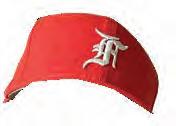
Heidi Czerwiec PhD’02 has the collection Crafting the Lyric Essay: Strike a Chord forthcoming in 2024 from Bloomsbury Press.

Czerwiec was a professor and writing conference director at the University of North Dakota for 12 years before absconding to write and teach in Minneapolis, where she is now a senior editor for Assay: A Journal of Nonfiction Studies. Her prior work includes four poetry chapbooks, the full-length poetry collection Conjoining , and the lyric essay collection Fluid States, winner of Pleiades Press’ 2018 Robert C. Jones Prize for Short Prose. Recent work appears in Brevity, Superstition Review, Waxwing, and River Teeth, and in the anthologies A Harp in the Stars, Nasty Women Poets, and New Poetry from the Midwest.
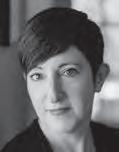
Amy Tibbals BA’03, Katie Bald BA’11, and Ryan Holbrook BA’19 co-authored What’s Good Salt Lake City, described as an “incomplete and biased selection of ghost towns, dim sum, pizza joints, patios, chair lifts, arches, architecture, green spaces, pastry cases, taquerias, theatres, bookstores, art works, doughnuts, coffee shops, camping spots, cocktails, and colloquialisms.”
Judge Jay T. Winward BS’03 currently serves on the Fifth District Court of Utah. After law school, Winward was a partner at Winward Law and then was a federal prosecutor, during which time he served a detail in Bogota, Colombia, on behalf of the U.S. Department of Justice and trained prosecutors throughout the country. Winward also teaches Business Law at Utah Tech University.
Jessica R. Kramer HBS’04, a U biomedical engineering assistant professor, is one of four national recipients of the 2022-23 Marion Milligan Mason Award.
A biannual honor bestowed by the American Association for the Advancement of Science, the prestigious award is given to promising early-career women in the chemical sciences. Kramer also holds an adjunct assistant professorship in molecular pharmaceutics.
u Alumni News
Jessica R. Kramer
Michael Kirklen
44 UNIVERSITY OF UTAH MAGAZINE
Heidi Czerwiec
SPOTLIGHT
John Willis BS’05 is the new city manager of St. George. Willis was previously community development director for the city and has over 17 years of experience in land use, planning, and zoning.
In 2019, she was named one of Musical America’s Top 30 Professionals in the Performing Arts.
Carly Nelson BS’19 is the new goalkeeper for the Orlando Pride soccer team.
Ashley Magnus MBA’13 is the executive director of the Acorn Center for the Performing Arts in Three Oaks, Michigan. Magnus has worked at the Chicago Opera Theater and began her career at the Utah Symphony/Utah Opera as a production coordinator for the opera department.
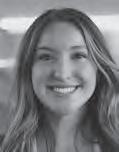

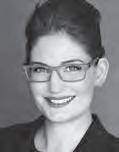

SPOTLIGHT
Nelson played on the U’s soccer team, earning All Pac-12 honors during her senior year. Prior to Orlando, she had most recently played with FC Nordsjælland of the Danish top-flight.

Award-winning mezzo-soprano Mandi Barrus MMU’19 recently visited the Blinn College District choir in Texas for two concerts along with a master class for the college’s choral students. Barrus runs an independent opera company in Utah and is a recent winner of Utah Opera’s AriaFest and the U’s Concerto Competition.
American Lung Association. He also spent 10 years with IBM as a business/ data analyst, co-founded a small electronics company with relative success, and holds a U.S. patent. His main passion outside work is still cycling, and he has achieved podium finishes at the state and national levels.
Aathaven Tharmarajah BFA’22 recently starred as Emmett Forrest in the national tour of Legally Blonde The Musical . Tharmarajah is an actor and performing artist based in New York City. Originally from the Bay Area in California, he grew up performing in choirs and has always loved singing. As a performer, he says his passion for storytelling “comes from a joy and need to reach others’ hearts and provoke reflective thinking through honesty and vulnerability.”

Mali Noyes BS’12 BSN’20 recently co-directed, co-produced, and costarred in the short film Girl Crush , which tells the story of a group of skiers heading out on a winter camping trip for five days of ski mountaineering in the Tetons, where they face wild animal encounters, unexpected weather, and more. Noyes is an oncology nurse at Huntsman Cancer Institute as well as a competitive skier. She transitioned into big mountain skiing after her career as a Nordic skier on the U ski team.

Hannah Peterson MS’20 was named a Young Geospatial Professional to Watch in 2023 by xyHt , a magazine for geospatial professionals. Peterson works at Aero-Graphics, where her focus is aviation. Peterson’s role includes helping hire and train new employees, execute flights, and more. As a graduate research assistant at the U, she focused on measuring snowpack depth by using motion remote sensing.
Major Peter Saunders PhD’20 was recently recognized as Air Education and Training Command’s Weather Field Grade Officer of the Year. Saunders is currently serving as an assistant professor for the Air Force Institute of Technology’s atmospheric science program.

Tom Rieber DNP’21 is currently a nurse practitioner in the Critical Care unit at St. Mark’s Hospital. “My life path into health care has been anything but straightforward,” he notes. “I have chosen to follow my curiosities.” Rieber was previously the director of the largest cross-country bike ride in American history, raising more than $8M for the
Chloe Carr BS’22 completed her bachelor’s degree in marketing in December (after just two and a half years) before becoming the U’s 2023 student commencement speaker. She recalls, “In school, I was challenged beyond what I believed I was capable of and pushed out of my comfort zone into that space where I’ve been told growth happens.” She is now a communications specialist at Korn Ferry Institute, an innovation center focused on illuminating key trends and drivers of human and organizational performance.
Katya Podkovyroff Lewis BS’23 recounts that during her very first semester at the U, “I got my first taste of lab work and fell in love.” A few summers later, she joined her first field research experience and realized, “I could get paid to camp in the forest and do science at the same time.” She says, “Exploring the outdoors and daydreaming of how everything was connected was what fueled my childhood. Learning that I could do the same thing as a job was euphoric.” Her next step is to attend the University of Oregon as an NSF graduate research fellow, pursuing a doctorate in biology.
Desange Kuenihira BS’22 BS’22 recently wrote a memoir, unDEfeated Woman, where she takes readers on the challenging journey of her childhood, beginning with fleeing with her siblings from the civil war raging in Congo and facing the subsequent daily struggle of life in a refugee camp in Uganda, where she suffered many forms of abuse. Later, she relates her journey to America, the culture clash of living with American foster families, and her quest for education and the ability to control her own life. Kuenihira is now an academic advisor at Southern New Hampshire University. In gratitude for her opportunities and to extend them to others, Kuenihira launched the nonprofit UnDEfeated to help educate and empower other underprivileged girls and women in Uganda.
Janice Darko DDS’23, an immigrant from Ghana, used some of her time at the U’s Dental School to create the Black & Art Dental Student Association to help showcase her and other students’ artistic sides, heritage, and culture; to build community; and more. In addition to academic pursuits (previous studies have included biochemistry and nutritional science), Darko has been a member of the U.S. Navy Reserve for more than 11 years.
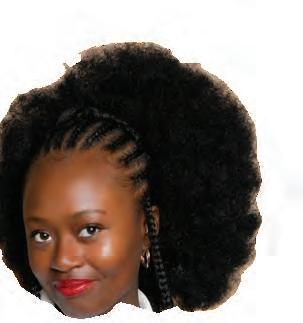

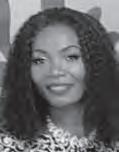
What’s up with U?
Send updates to classnotes@utah.edu

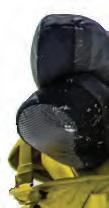
Alumni News u
’10s
’20s
Peter Saunders
Ashley Magnus
Mandi Barrus
Janice Darko
Katya Podkovyroff Lewis
Aathaven Tharmarajah
Chloe Carr
FALL 2023 45
Carly Nelson
Did you know? Every University of Utah license plate on the road helps support hundreds of U students through the U Alumni Scholarship Program. This year, you can choose from two di erent options—the block U plate or the back-by-popular-demand interlocking U plate!
Did you know? Every University of Utah license plate on the road helps support hundreds of U students through the U Alumni Scholarship Program. This year, you can choose from two di erent options—the block U plate or the back-by-popular-demand interlocking U plate!


























Switch your plate today at alumni.utah.edu/plates.
Switch your plate today at alumni.utah.edu/plates.


















































































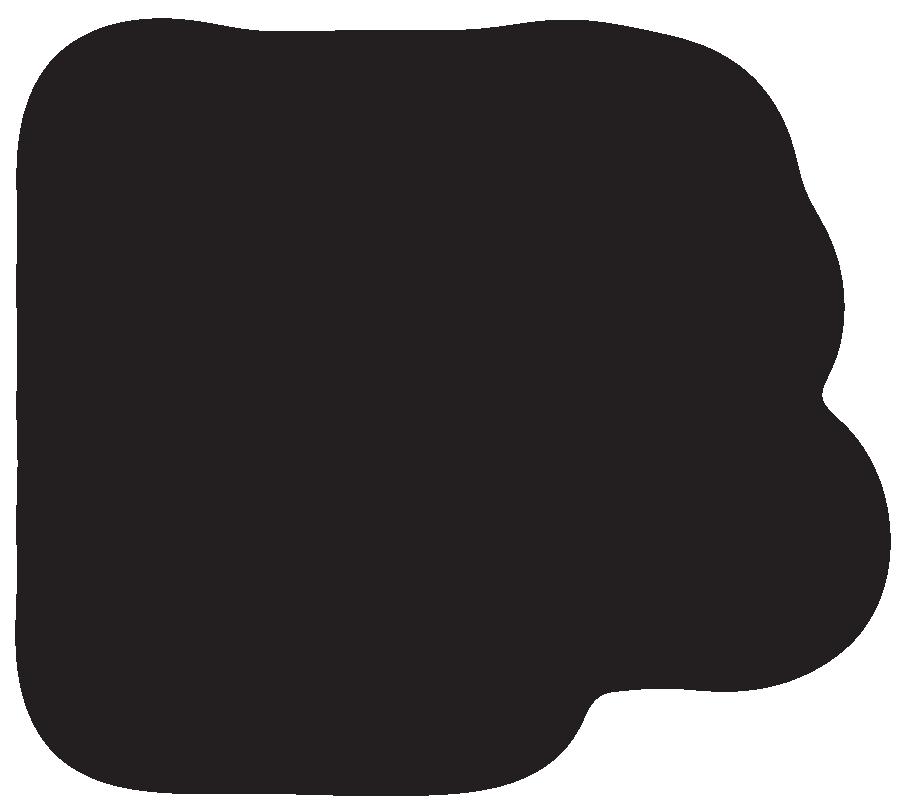
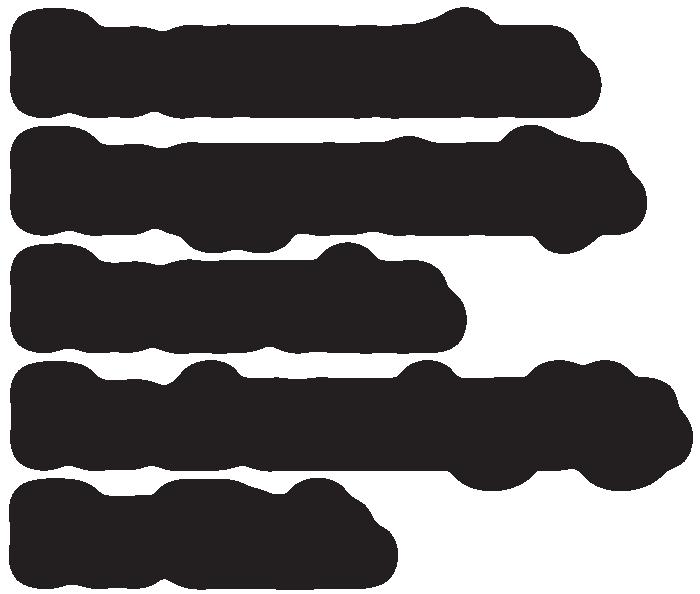
Safeguarding Code Talker Legacies
Of the few hundred Navajo (Diné) Marines who served as code talkers during World War II, just three are still alive. Thanks to a unique collection of oral histories at the J. Willard Marriott Library, many more of their stories live on. The collection includes accounts recorded at a 1971 reunion in Arizona. “The voices of code talkers encrypted the vital command and control of Marine Corps operations in WWII, and today, through the invaluable special collection at the University of Utah, their voices reveal these details for posterity,” says Robert Peterson, acting director of the U.S. Marine Corps History Division. In this photo, Preston Toledo and his cousin, Frank Toledo, relay orders by radio in 1943.

48 UNIVERSITY OF UTAH MAGAZINE
PHOTO COURTESY OF SPECIAL COLLECTIONS, J. WILLARD MARRIOTT LIBRARY, C. GREGORY CRAMPTON PHOTOGRAPH COLLECTION (P0197), BOX 34, FOLDER 4
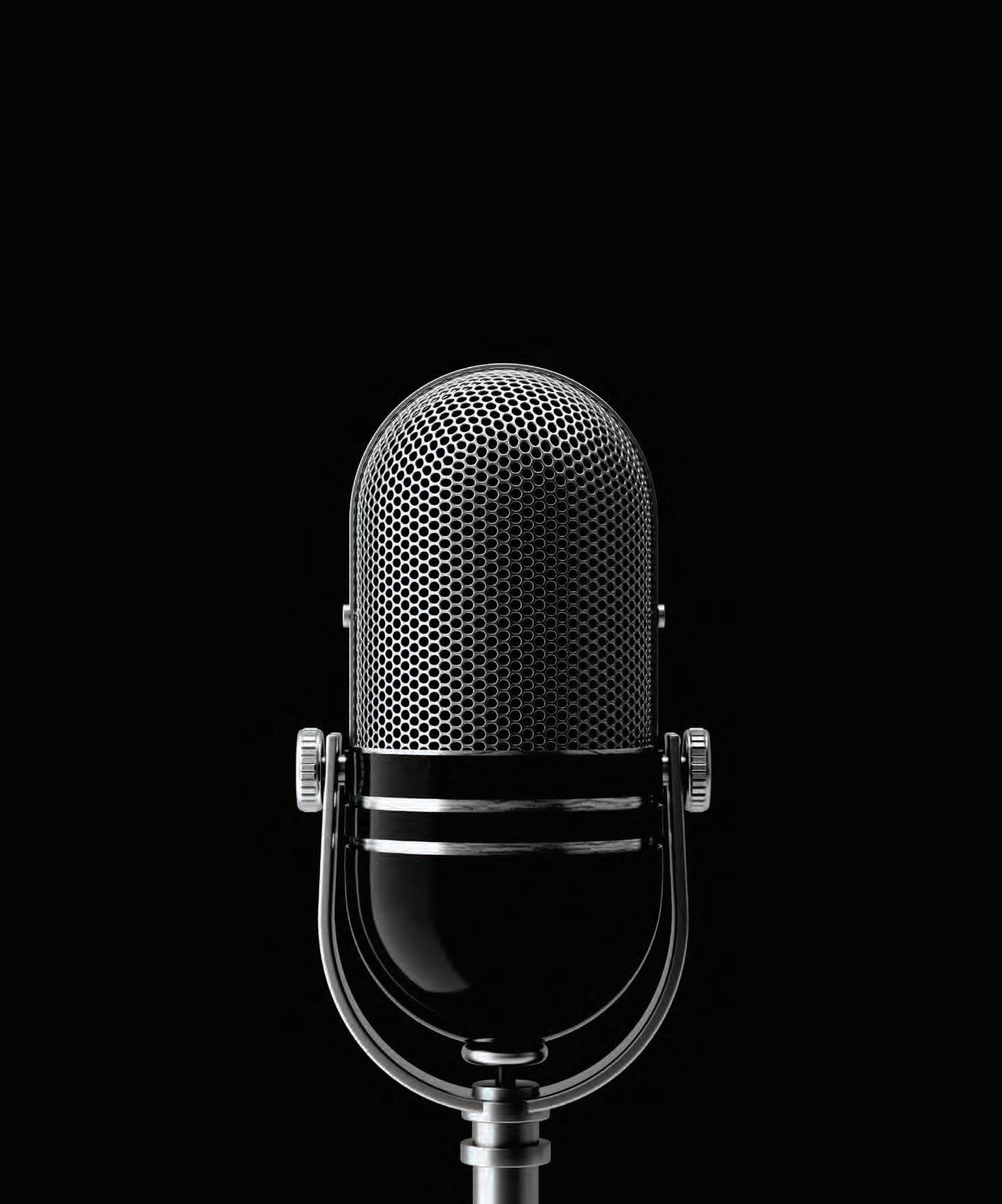
WITH HOSTS CHRIS NELSON & JULIE KIEFER
TO STORIES
THE UNIVERSITY OF UTAH. attheu.utah.edu/u-rising
LISTEN
FROM

PRSRT STD US POSTAGE PAID PORTLAND OR PERMIT No 2160 75 Fort Douglas Blvd. Salt Lake City, UT 84113


 PHOTO BY JEFF BAGLEY
PHOTO BY JEFF BAGLEY





































 Taylor Sparks BS’07, Associate Professor of Materials Science and Engineering
Hollis Robbins , Dean of the College of Humanities
Vivek Srikumar, Associate Professor of Computer Science
Elizabeth Callaway, Assistant Professor of English
Taylor Sparks BS’07, Associate Professor of Materials Science and Engineering
Hollis Robbins , Dean of the College of Humanities
Vivek Srikumar, Associate Professor of Computer Science
Elizabeth Callaway, Assistant Professor of English











 JOSHUA BLACK
to by
JOSHUA BLACK
to by










 by Lisa Anderson
by Lisa Anderson
































 ELENA GARDNER
ELENA GARDNER
































































